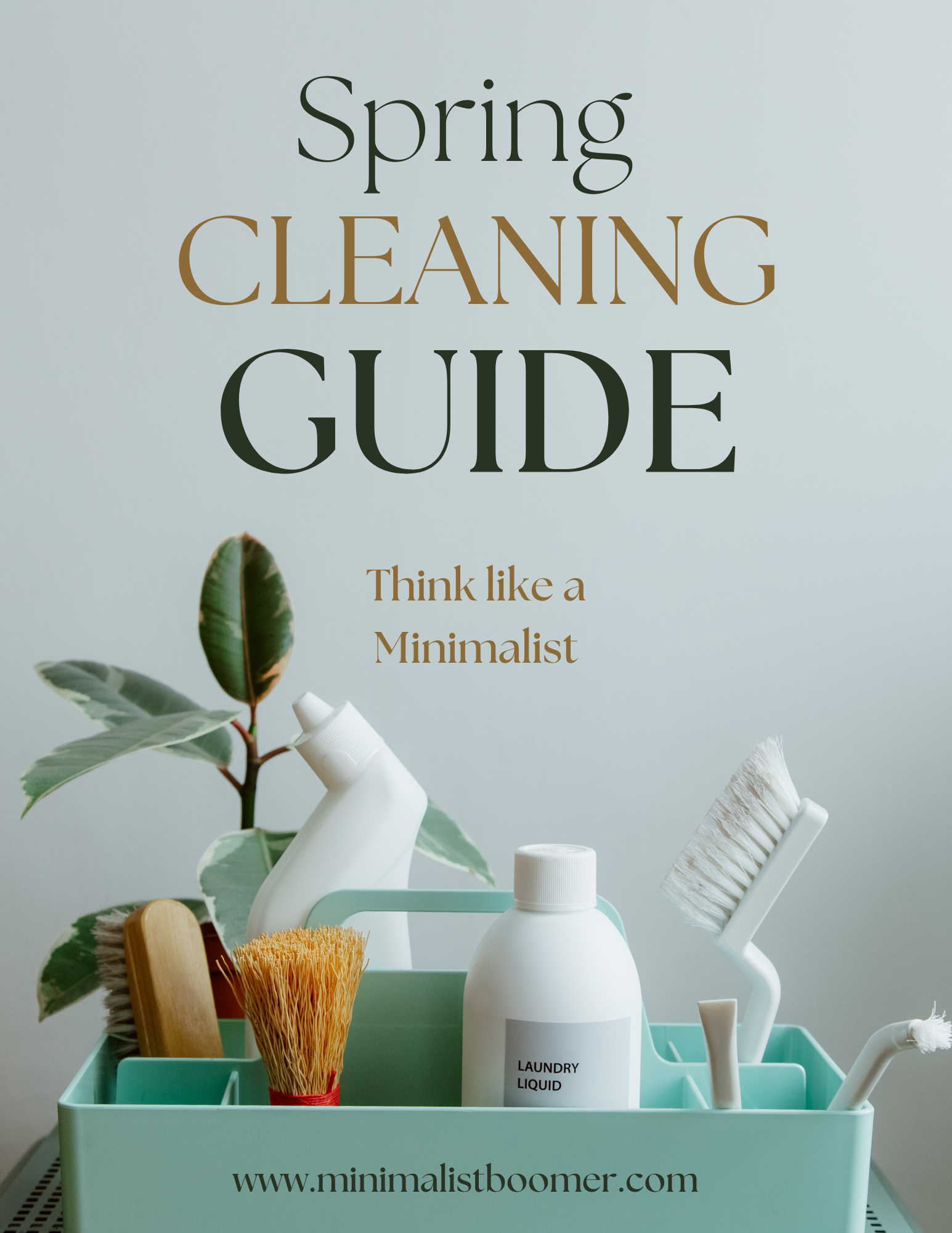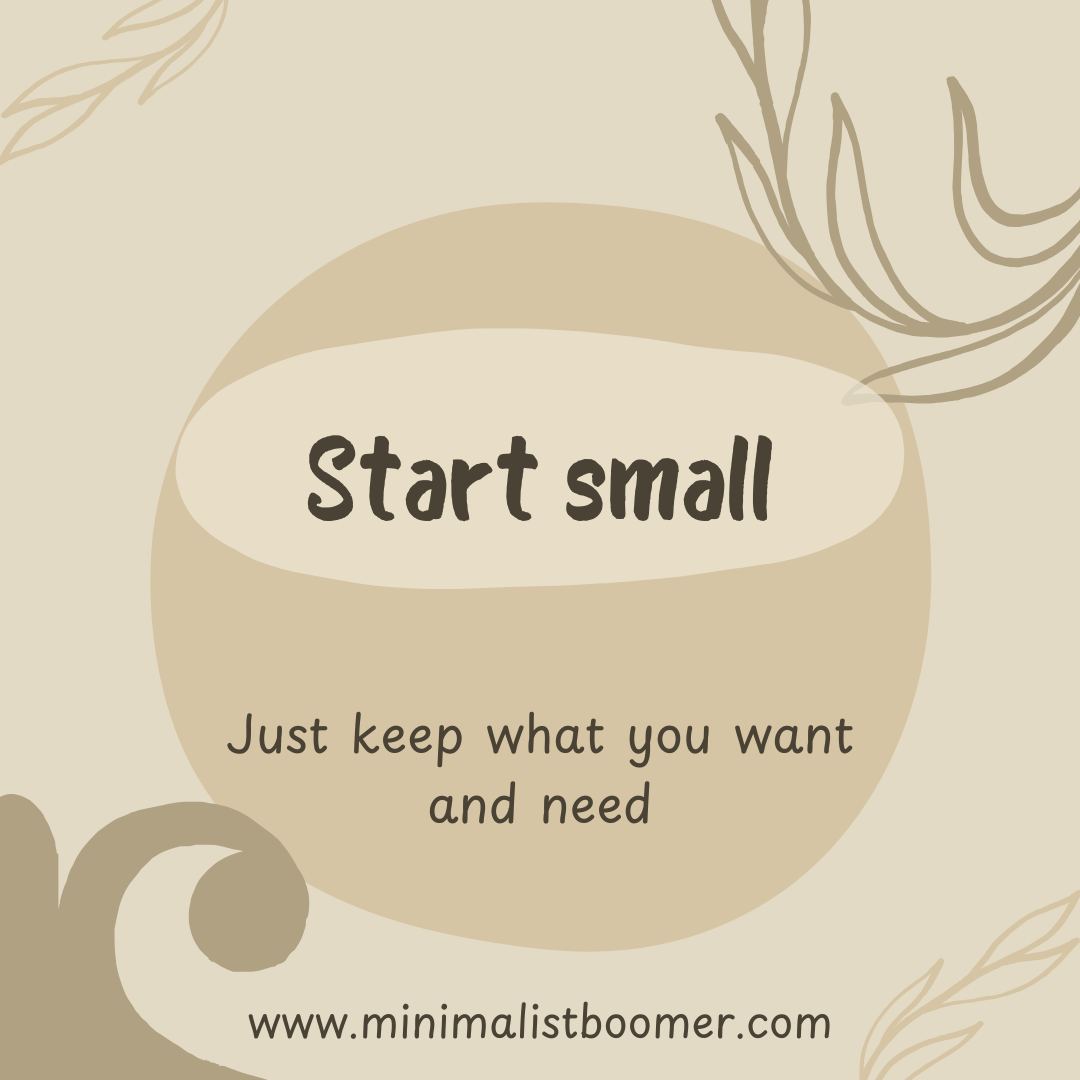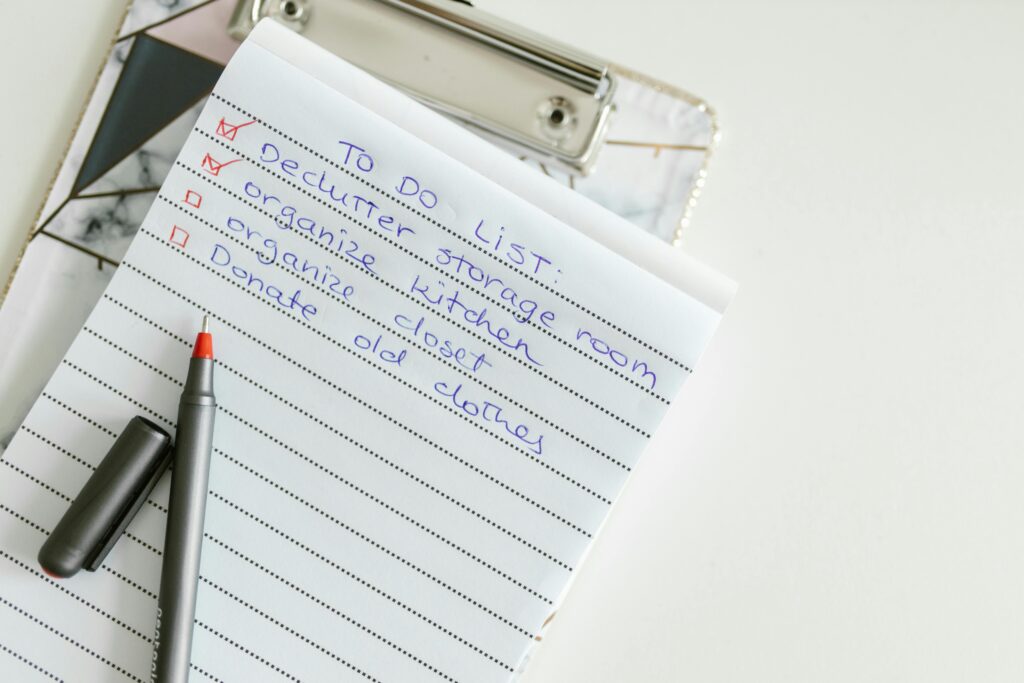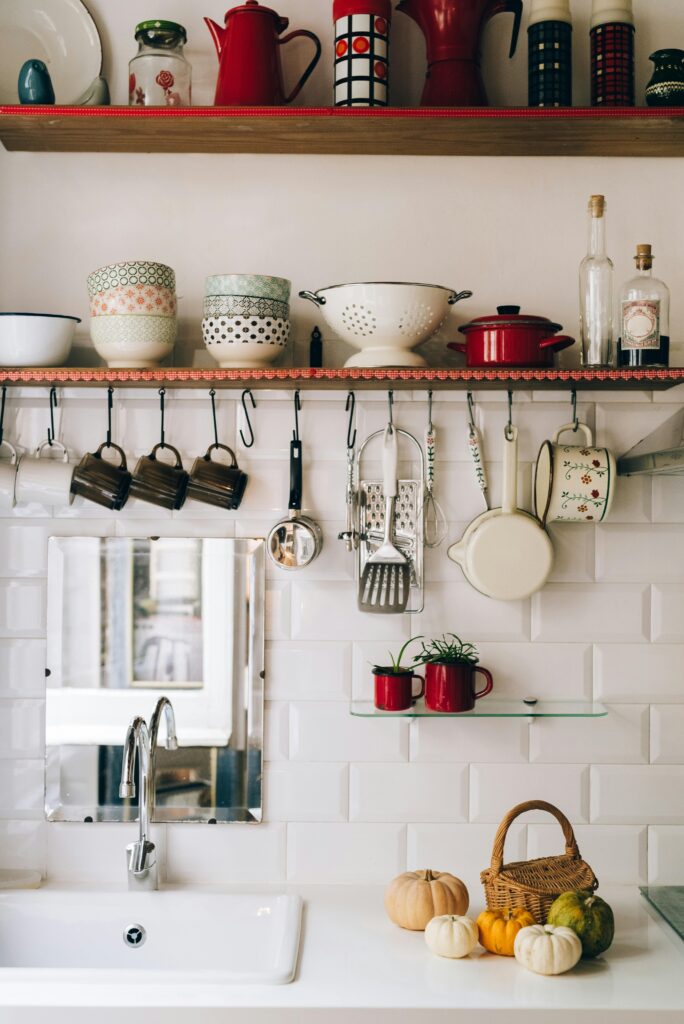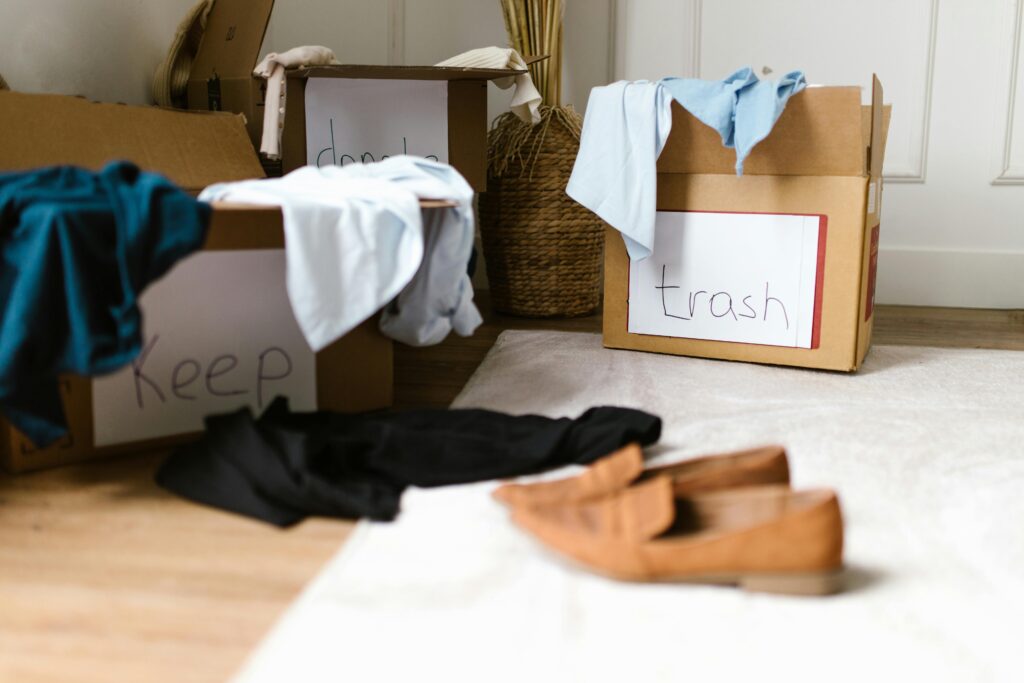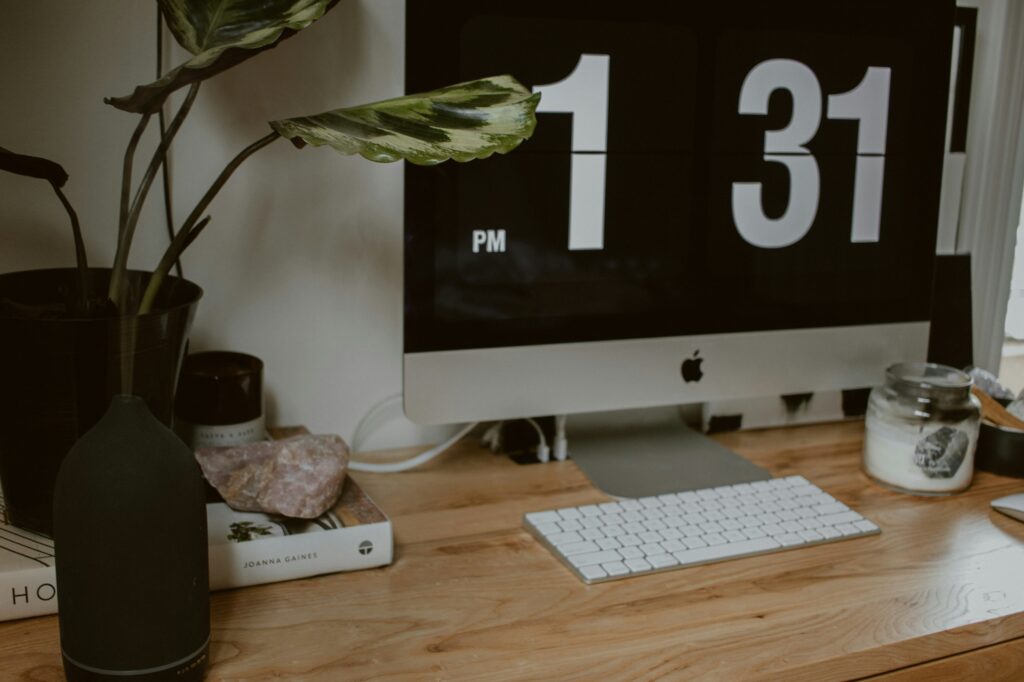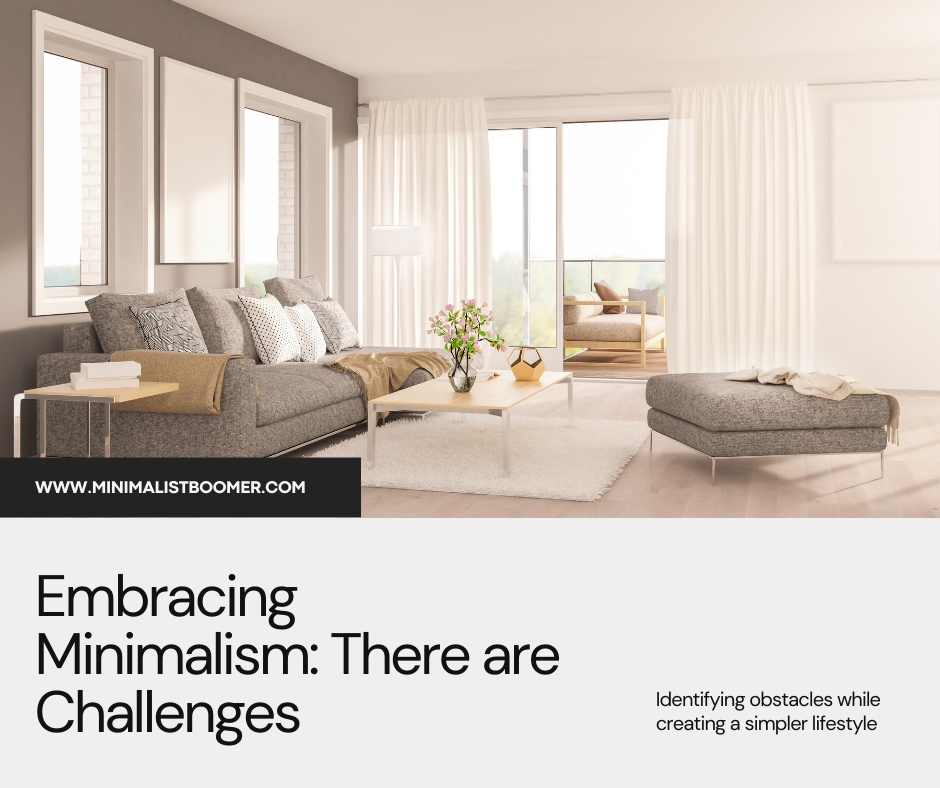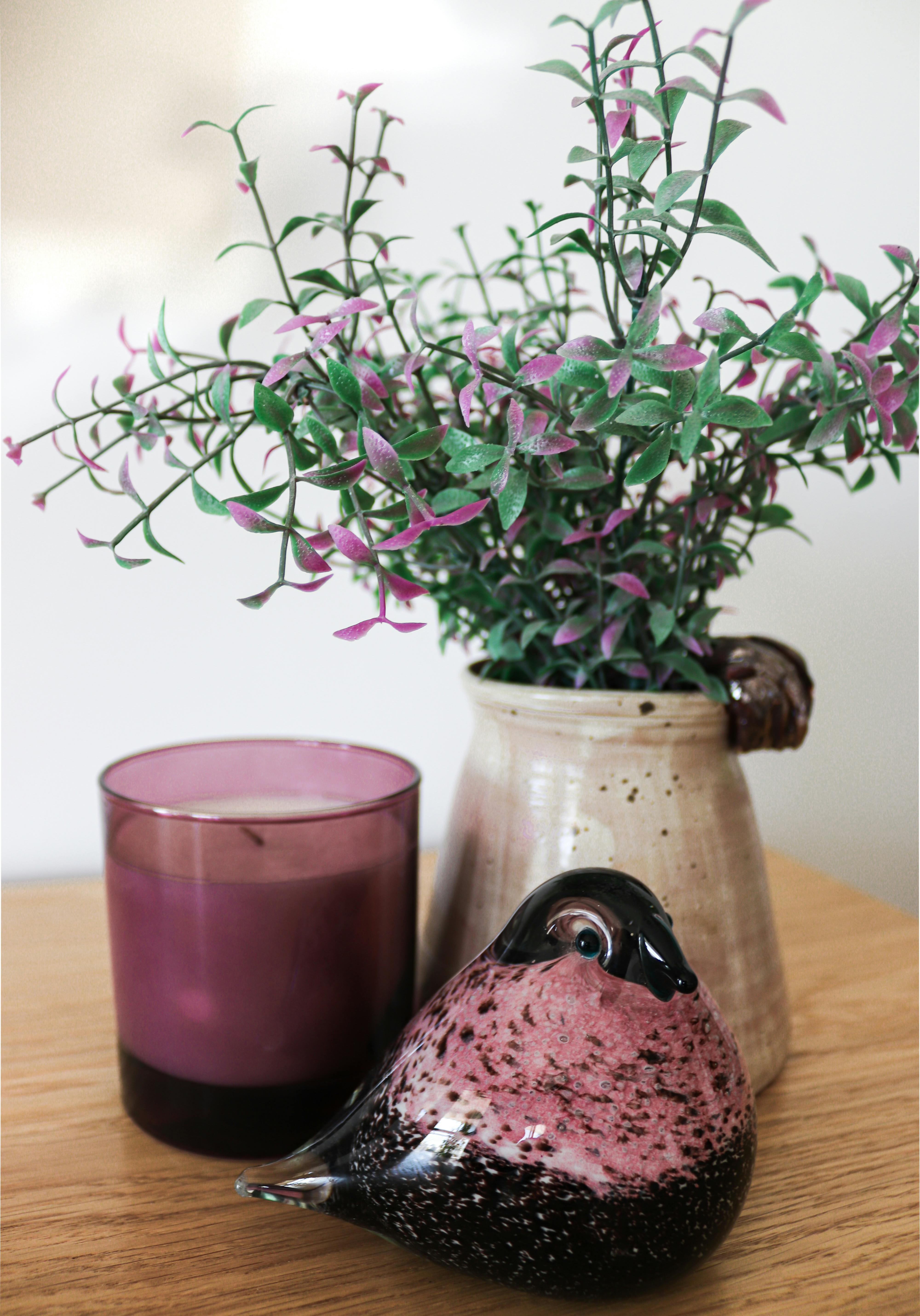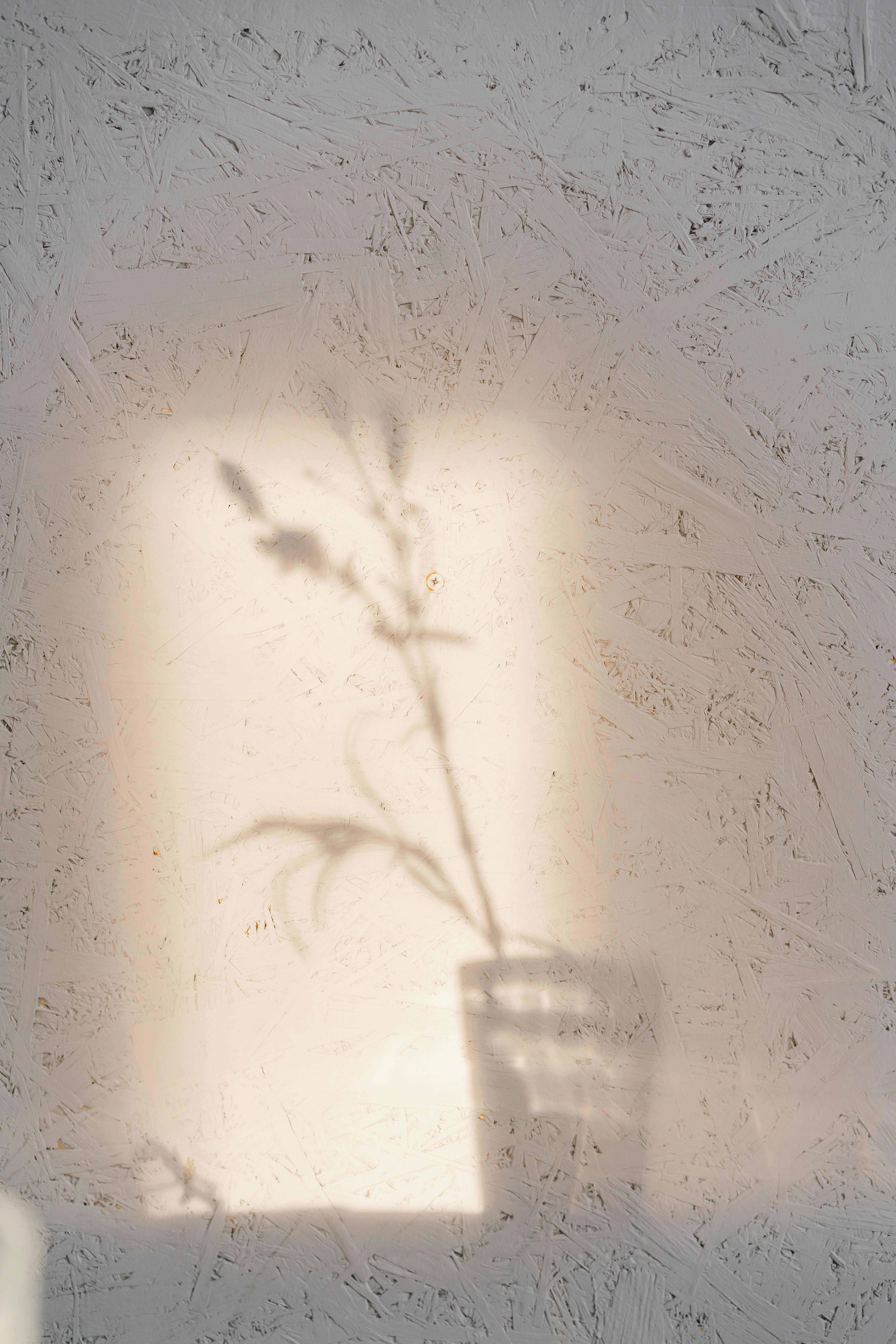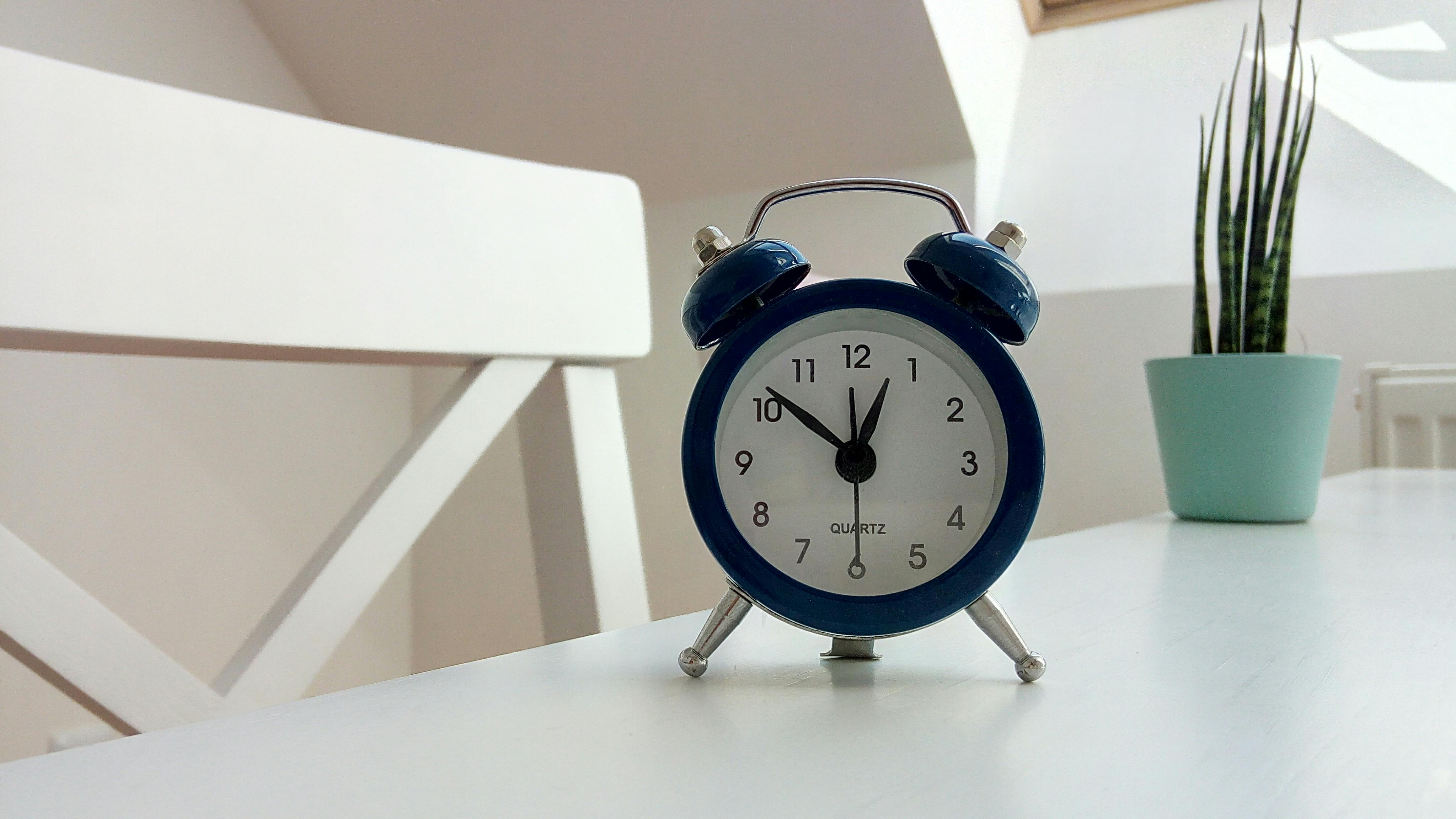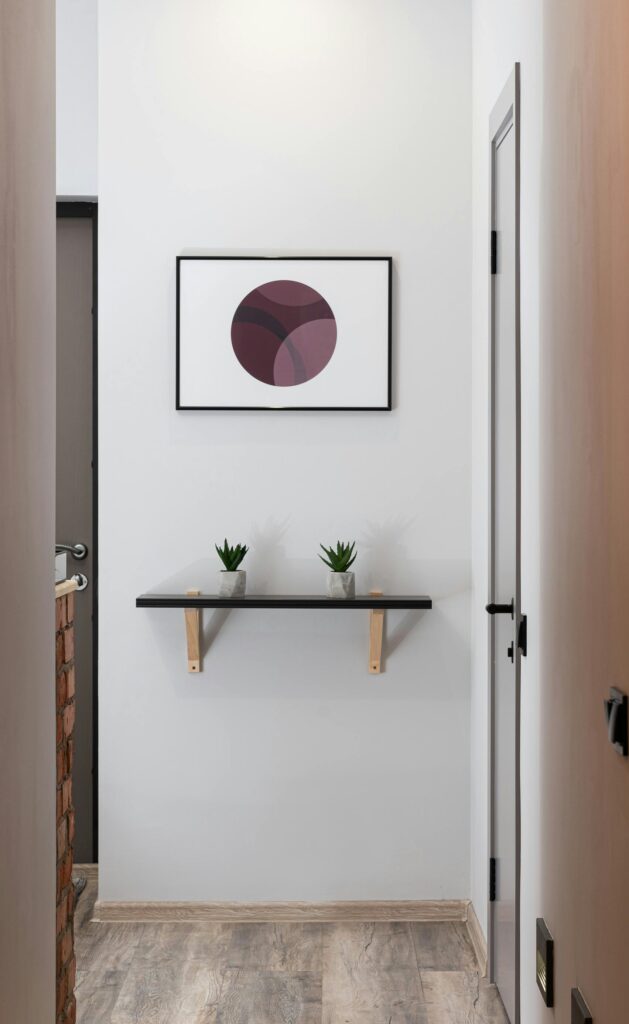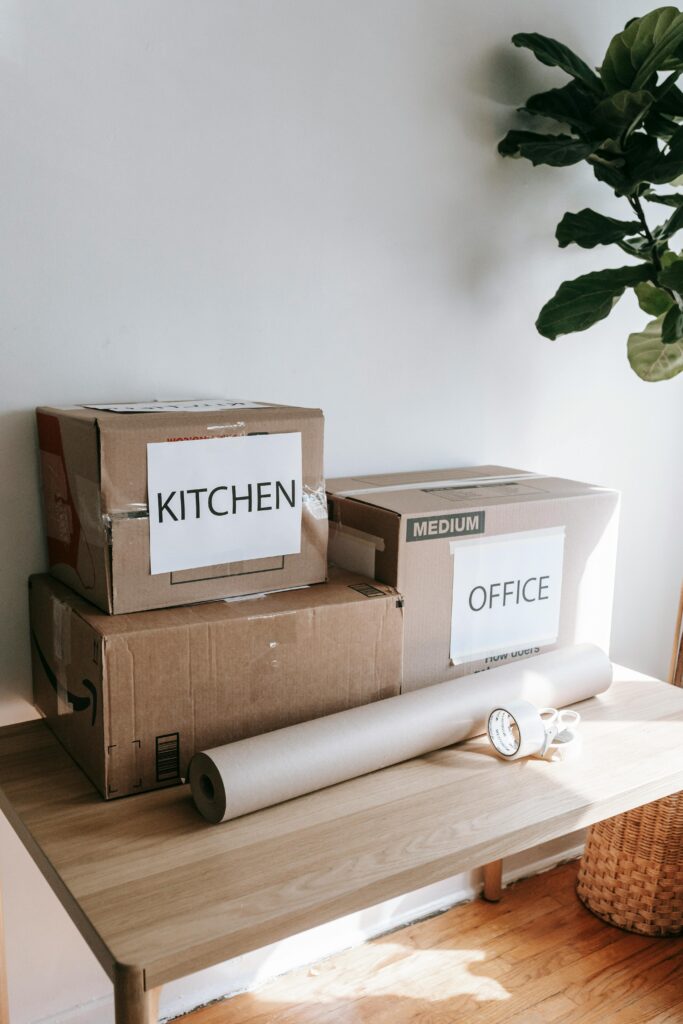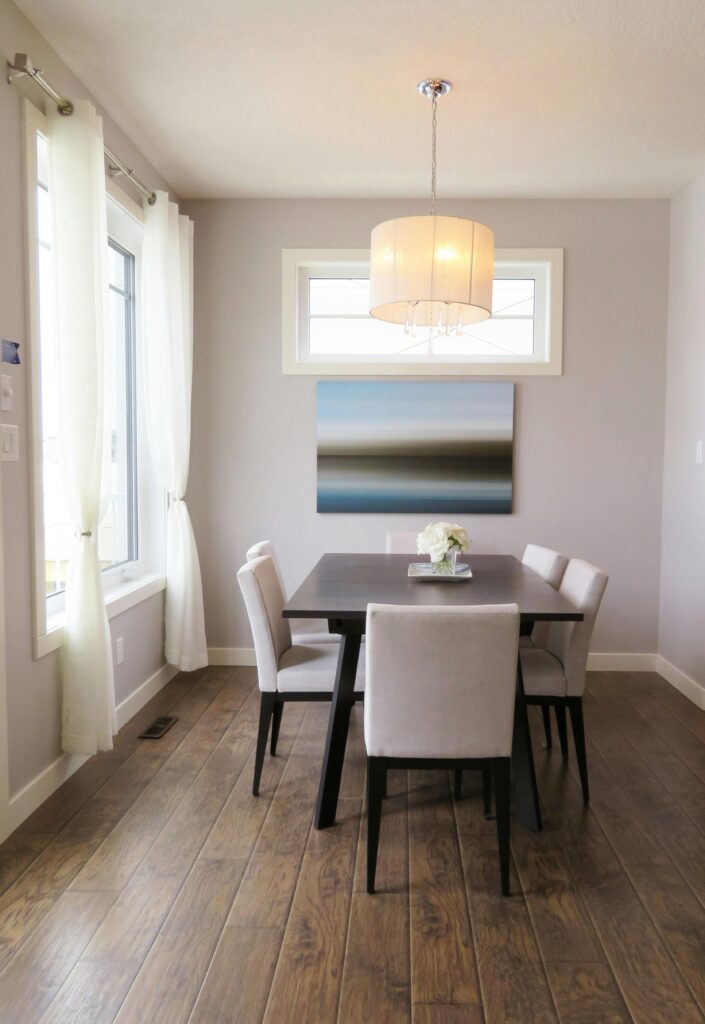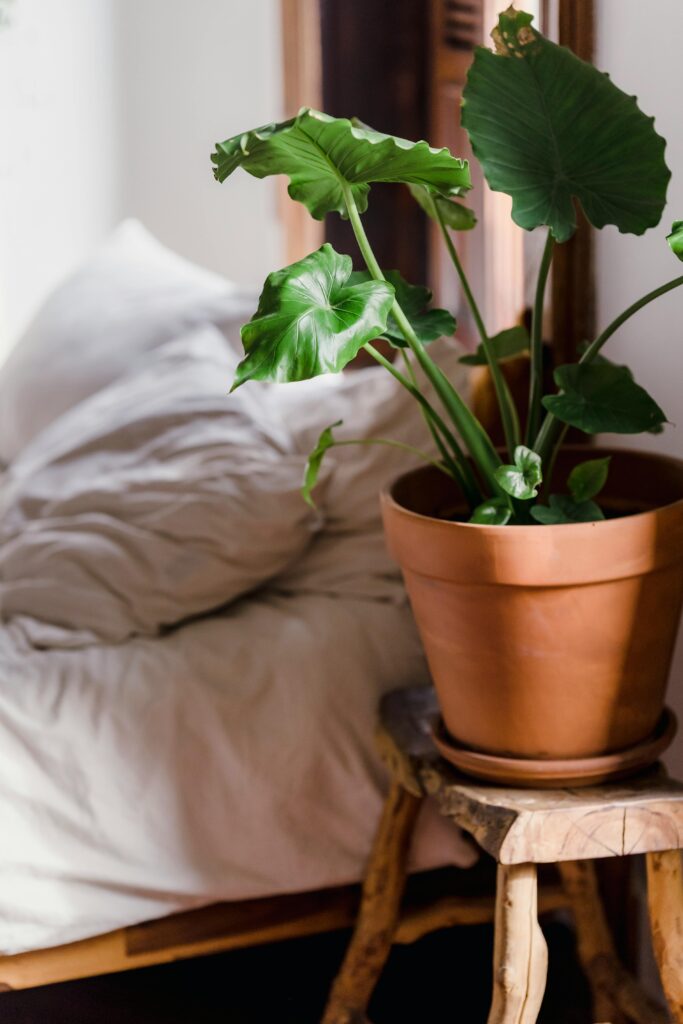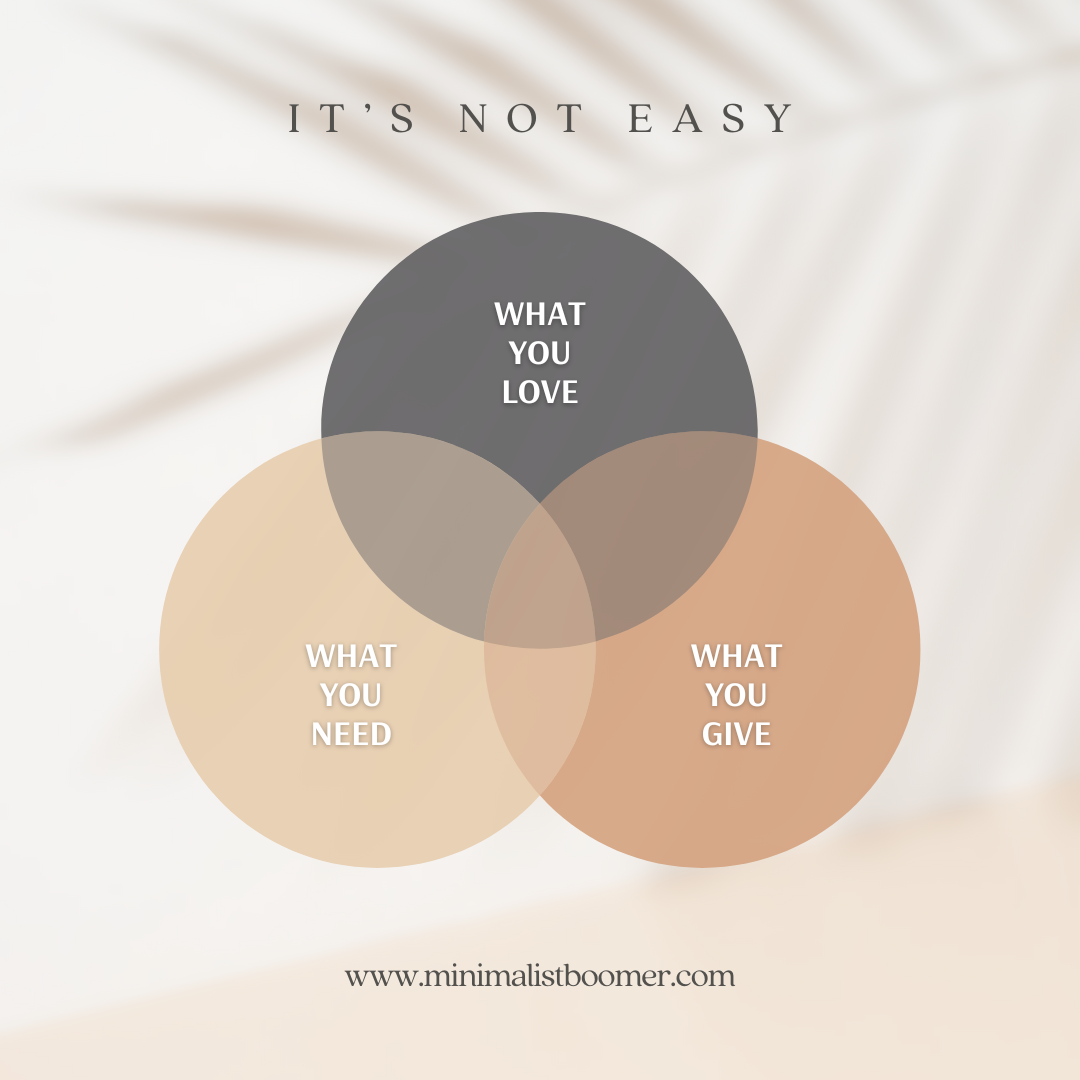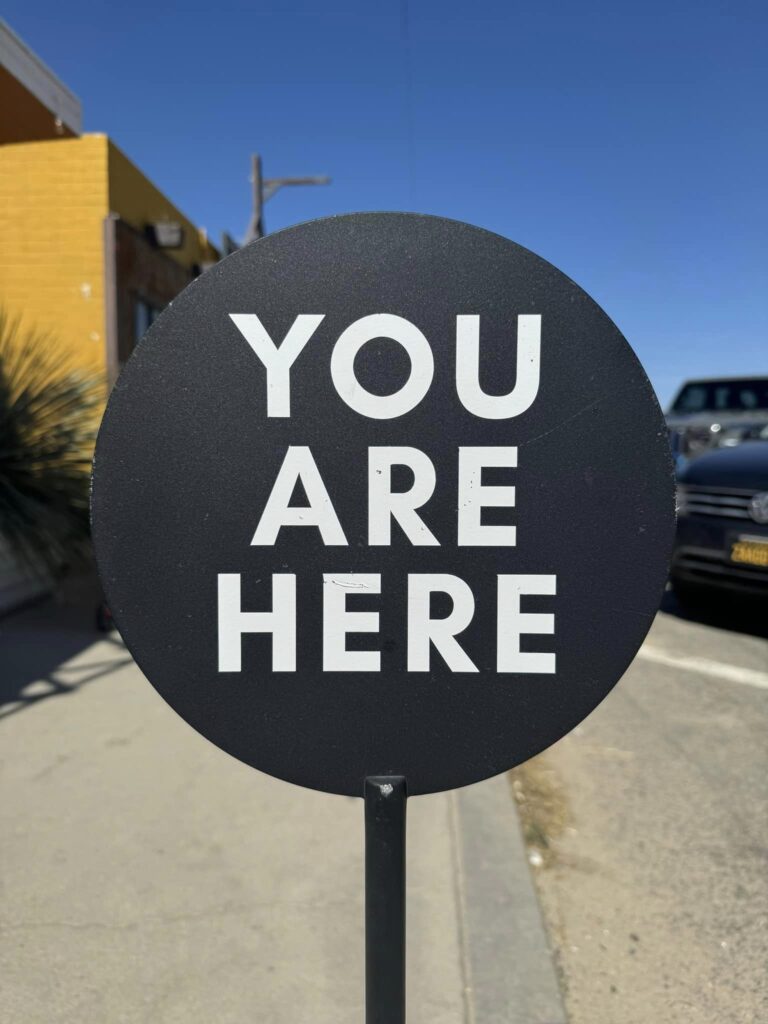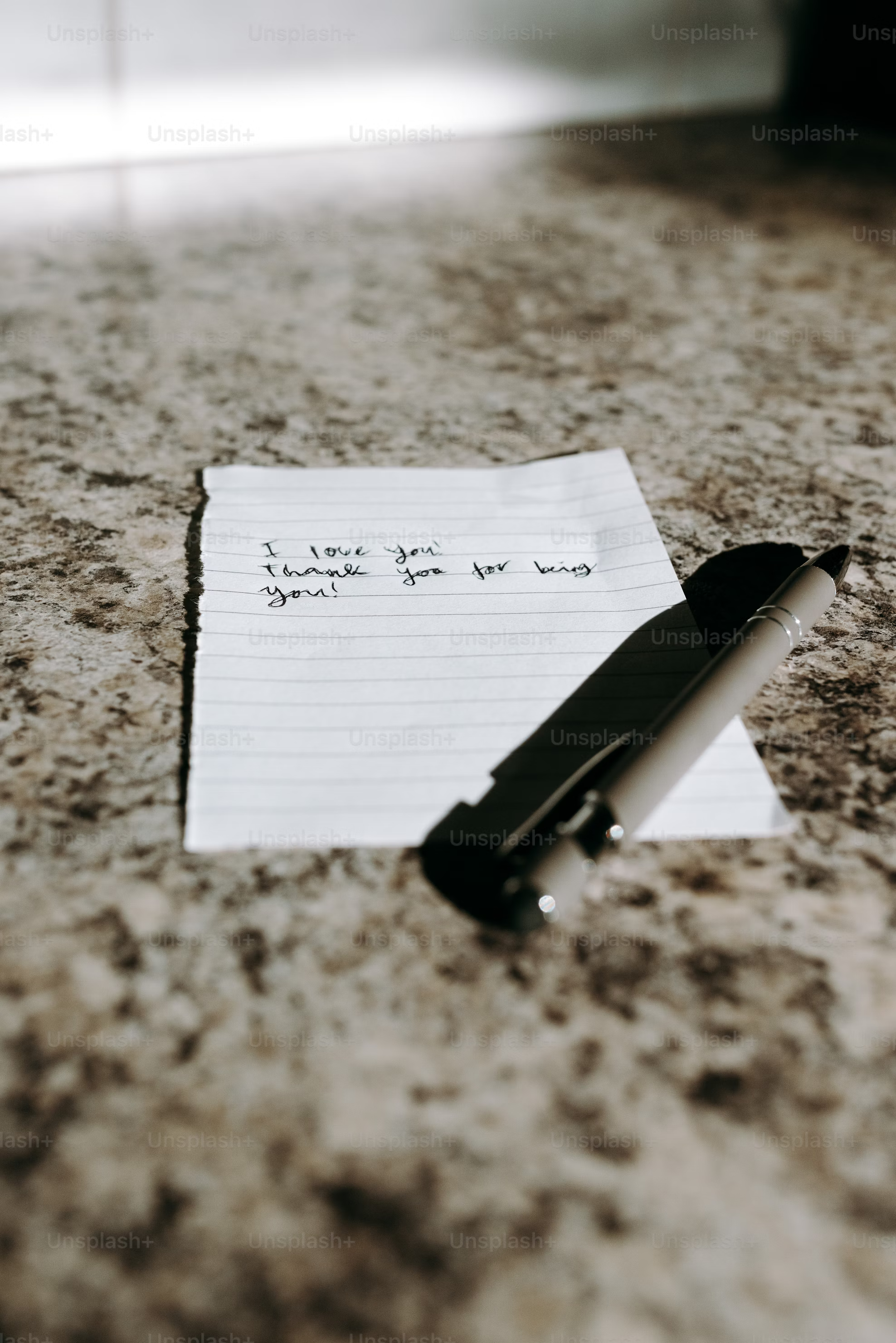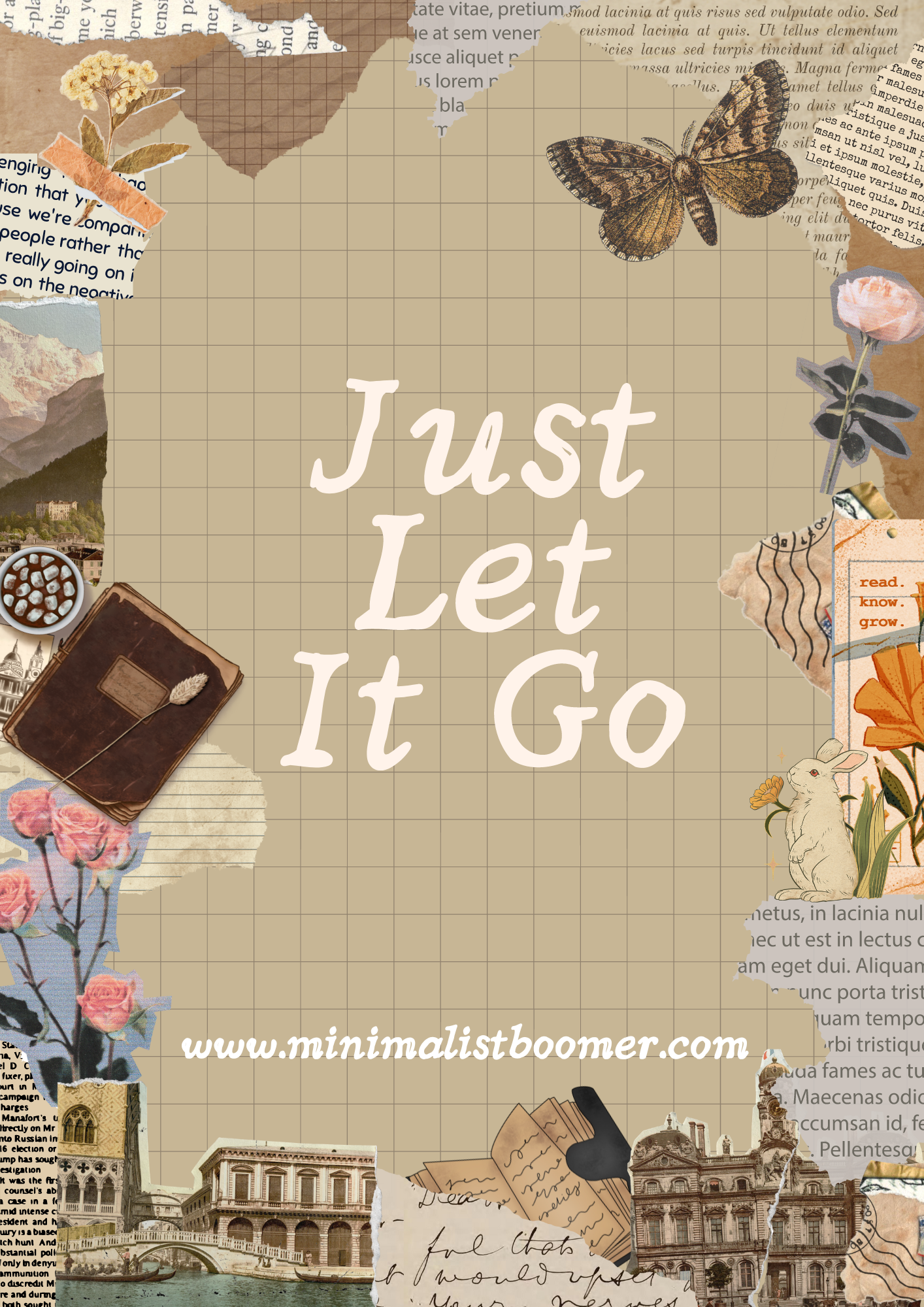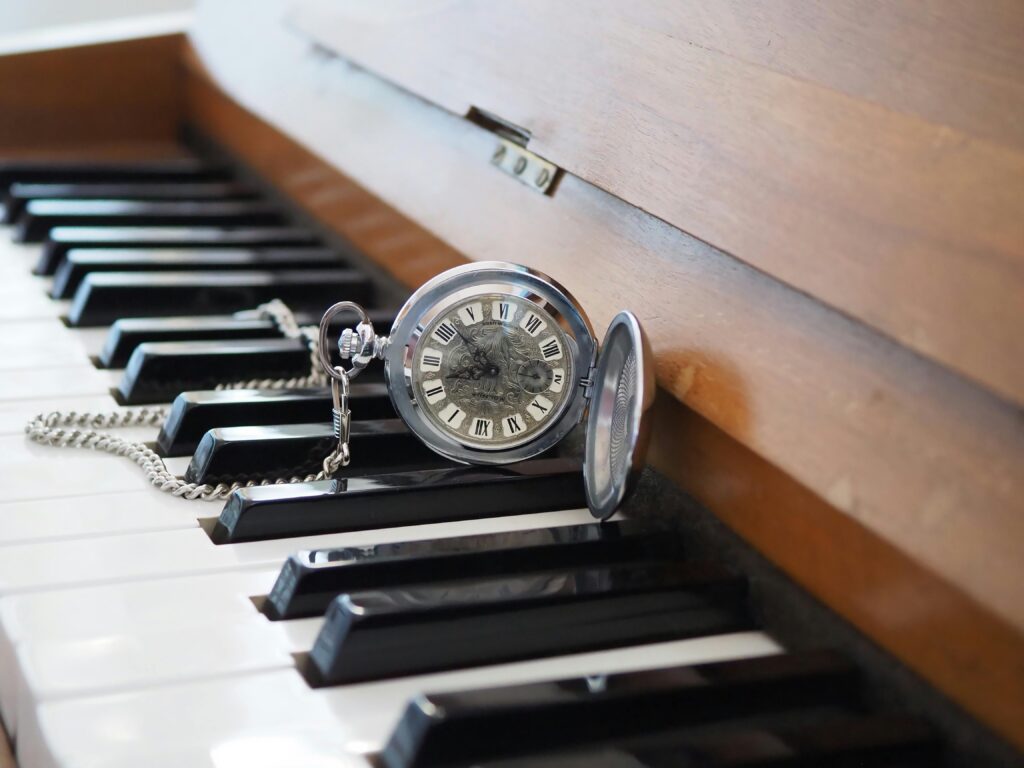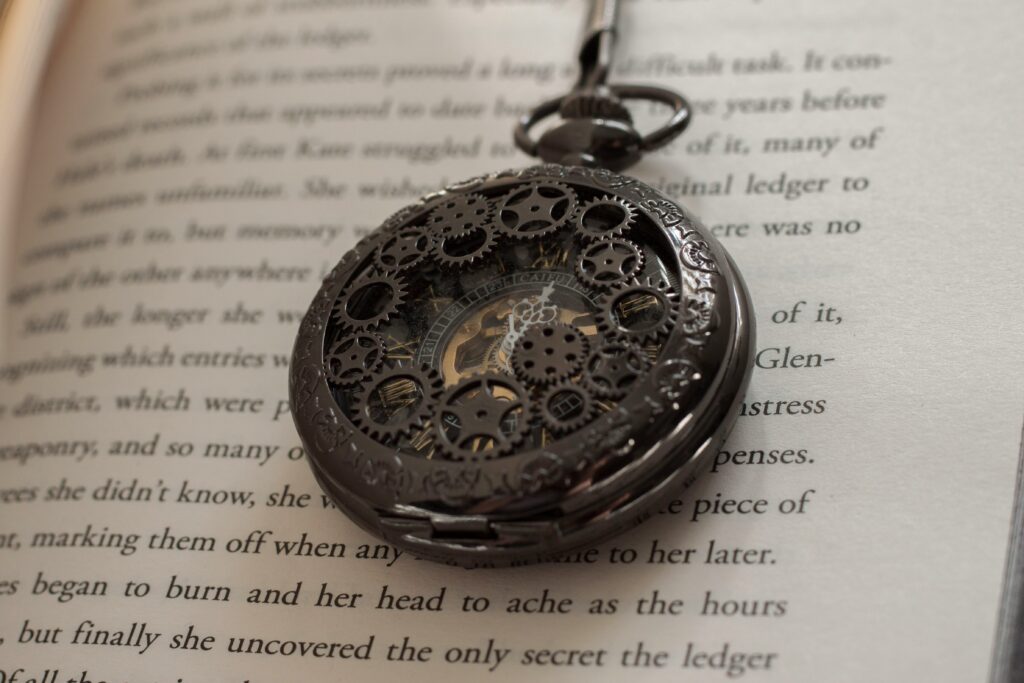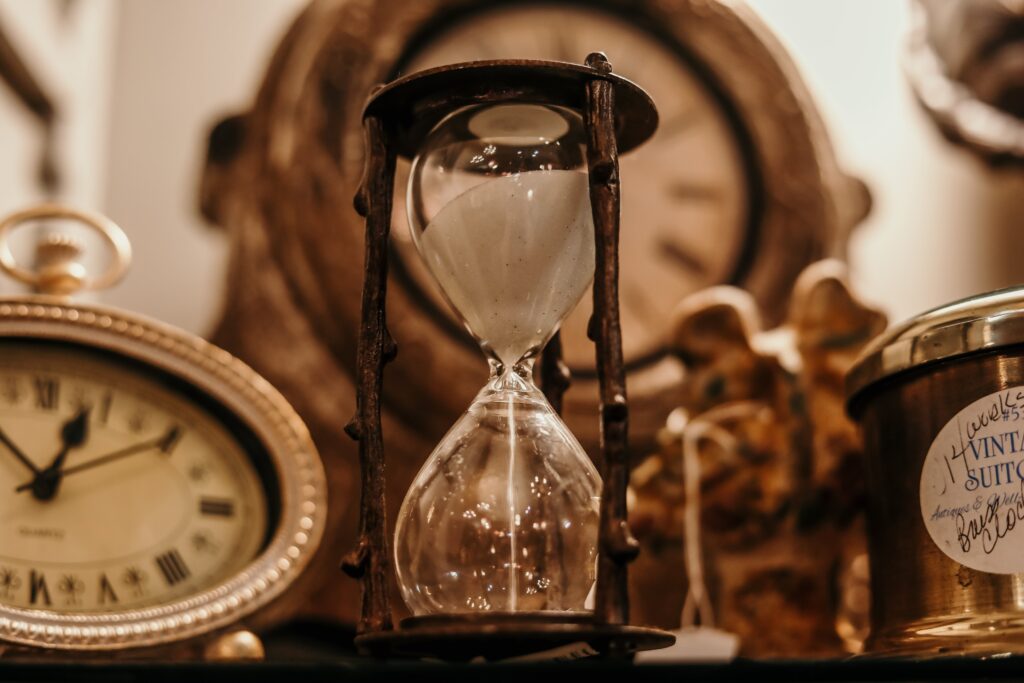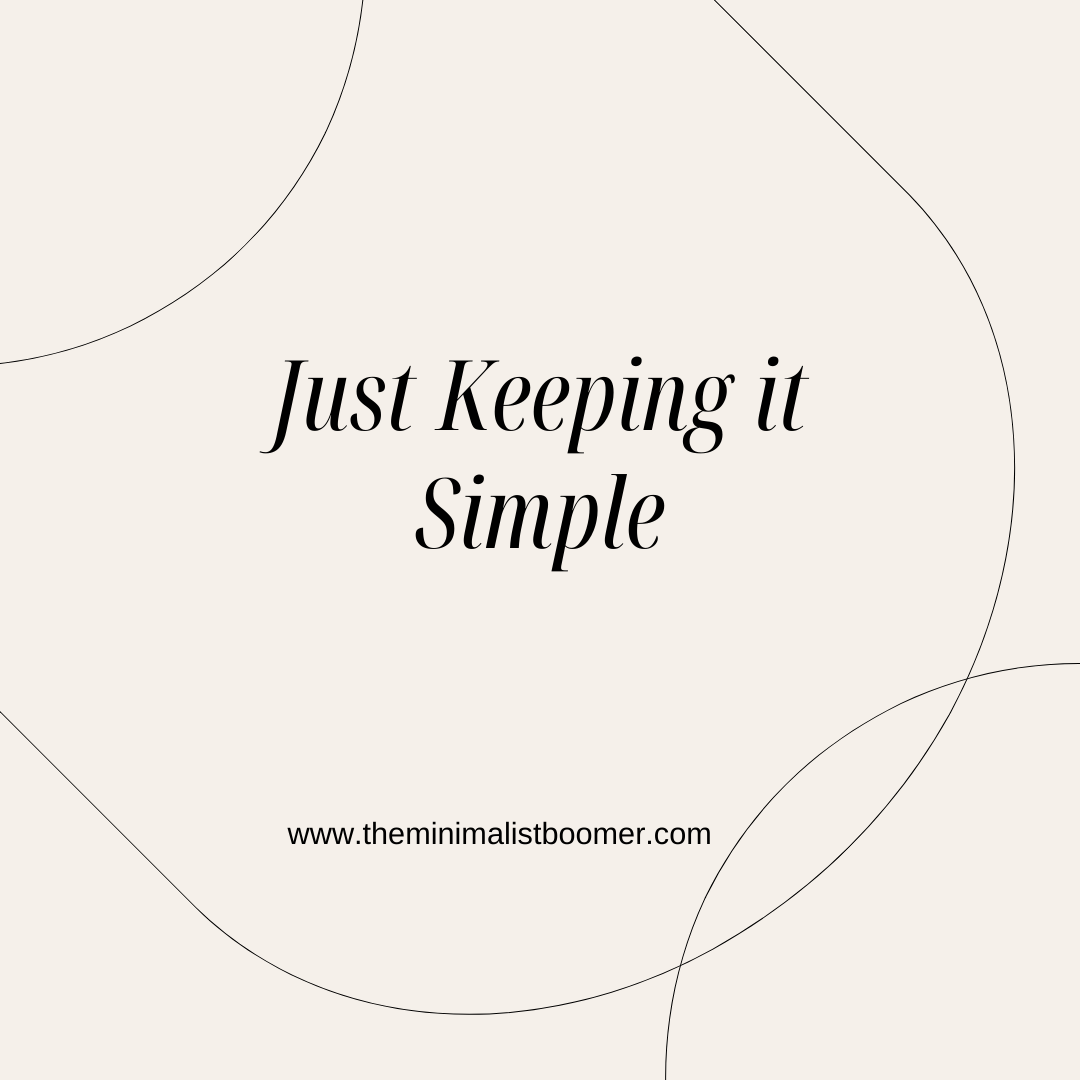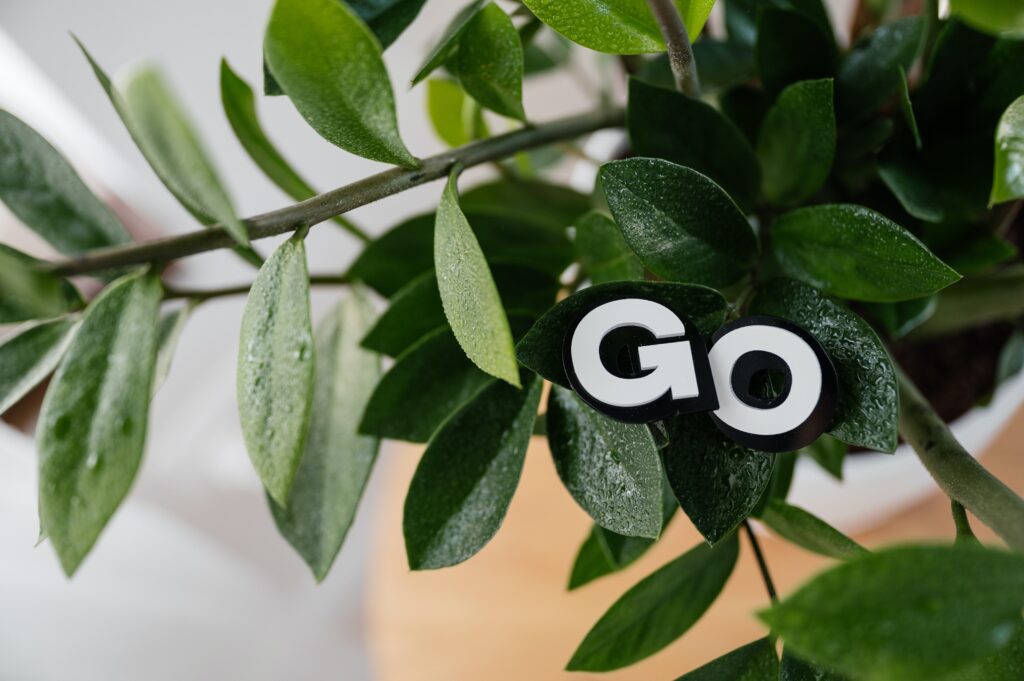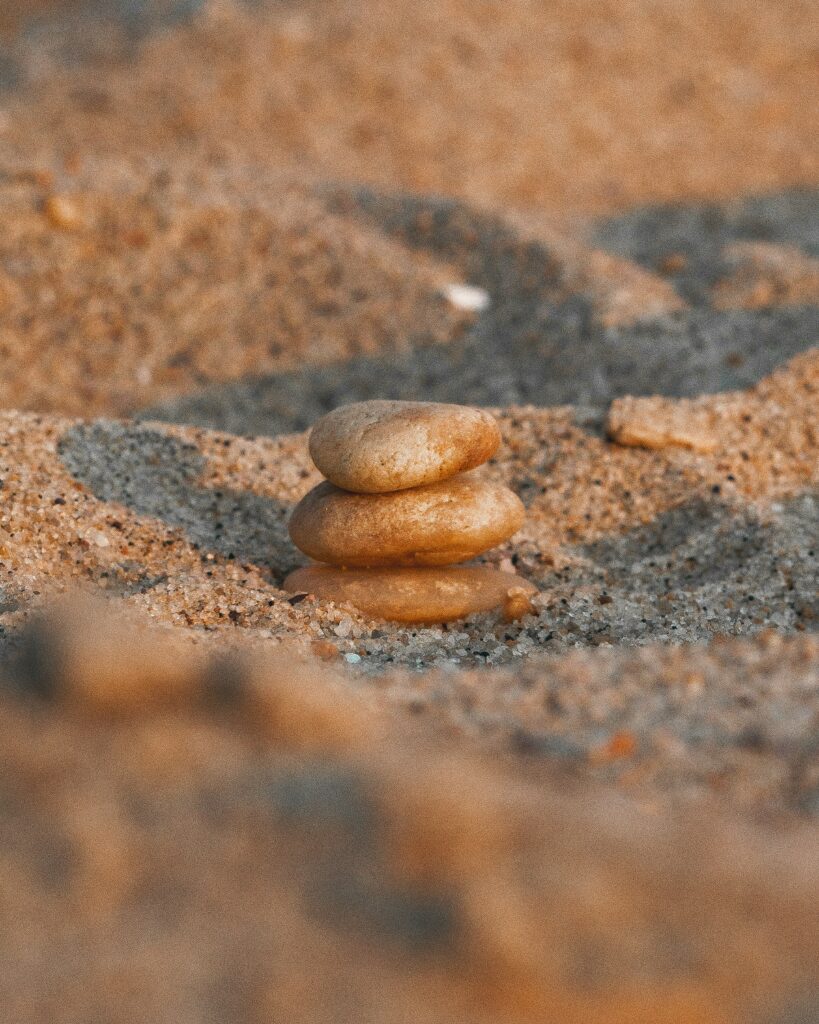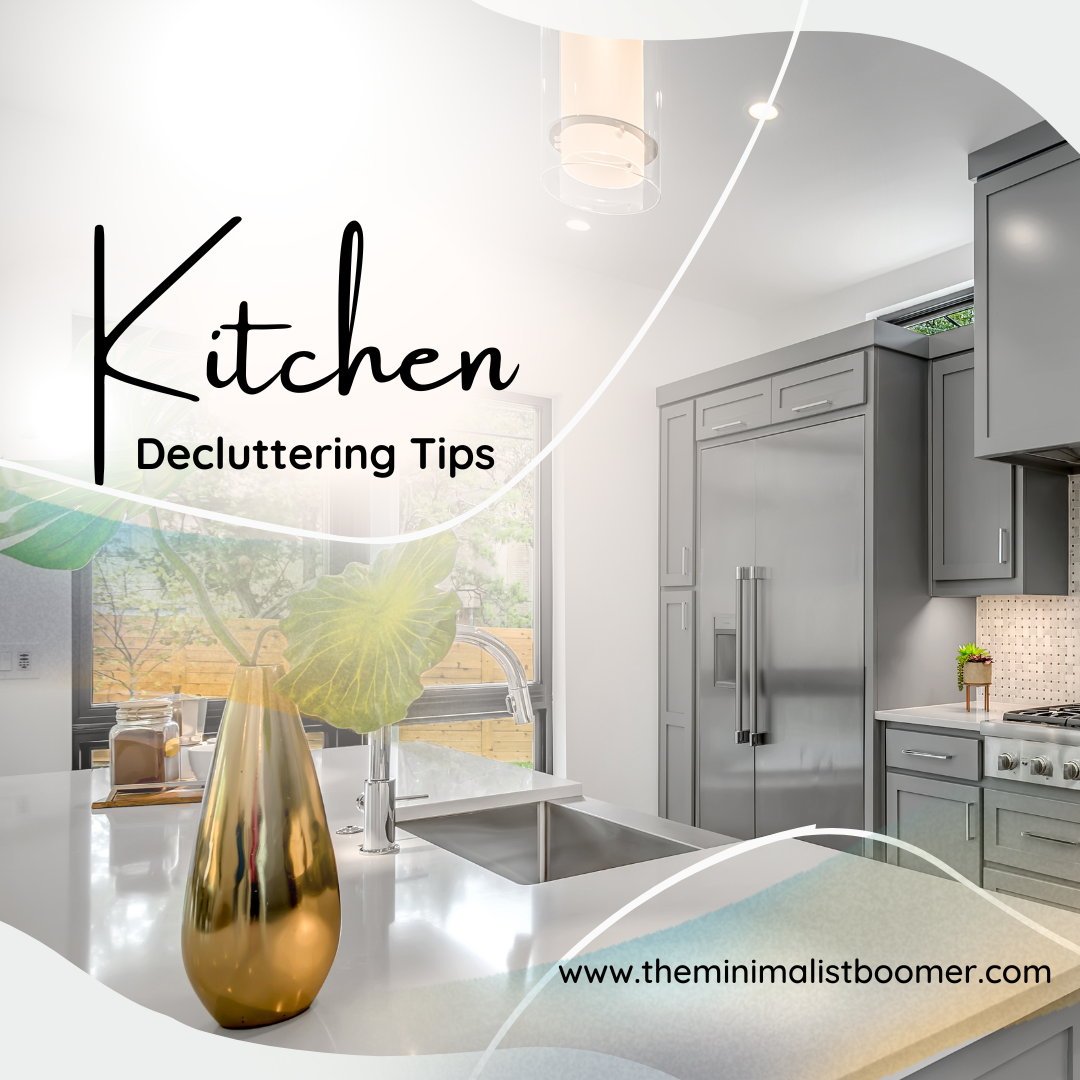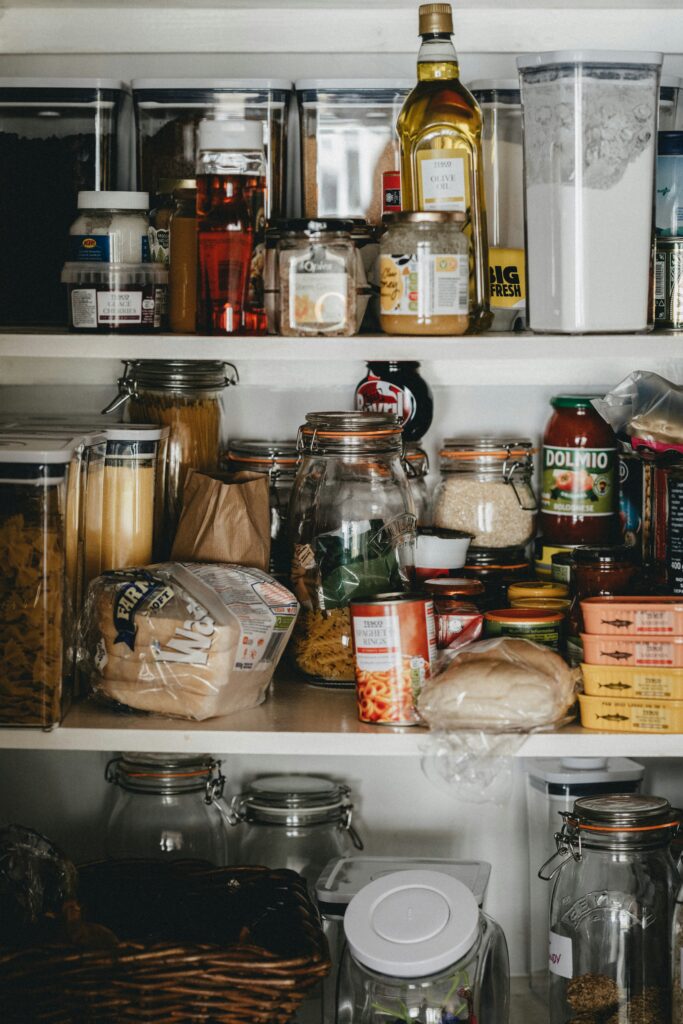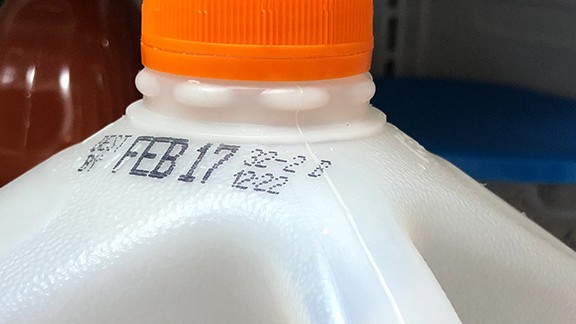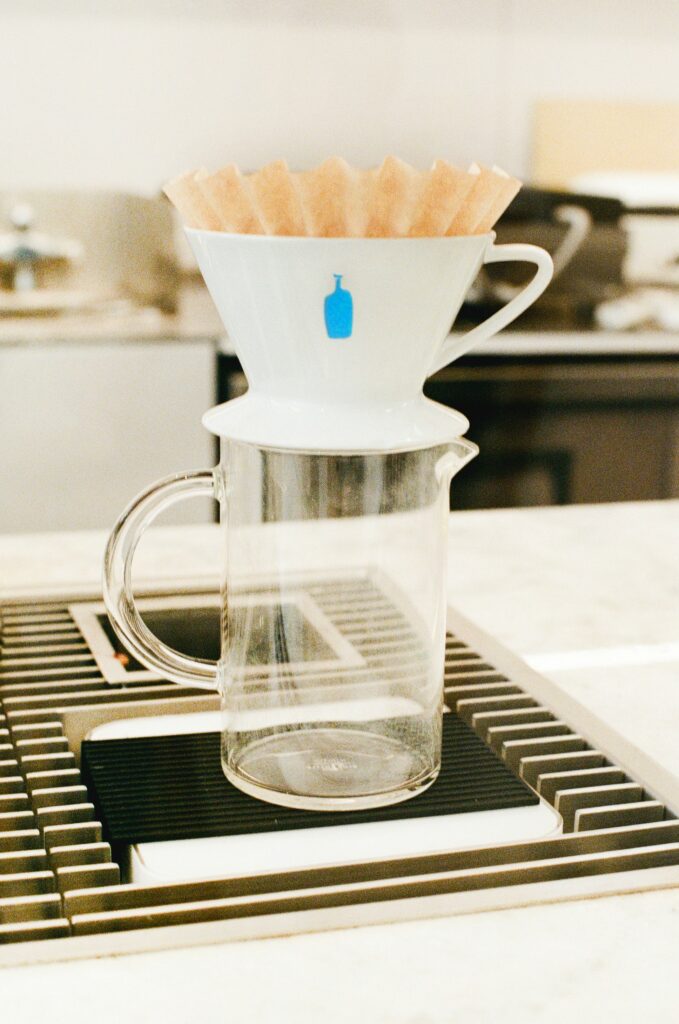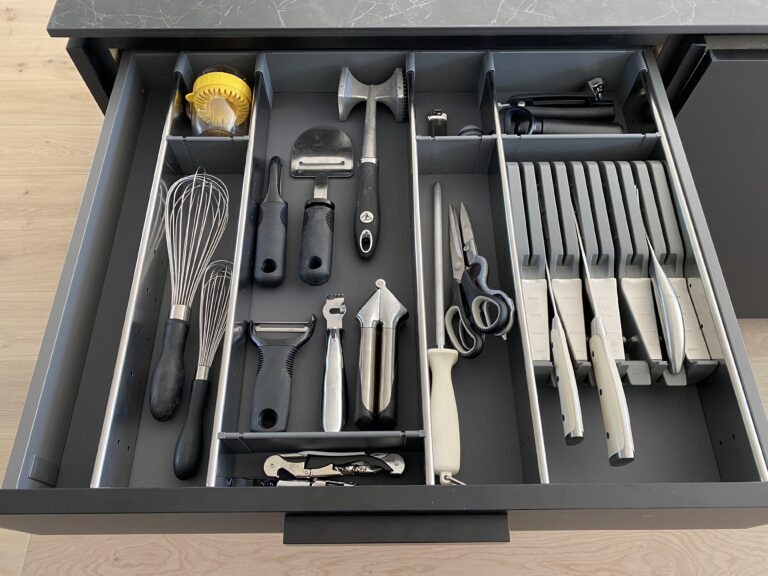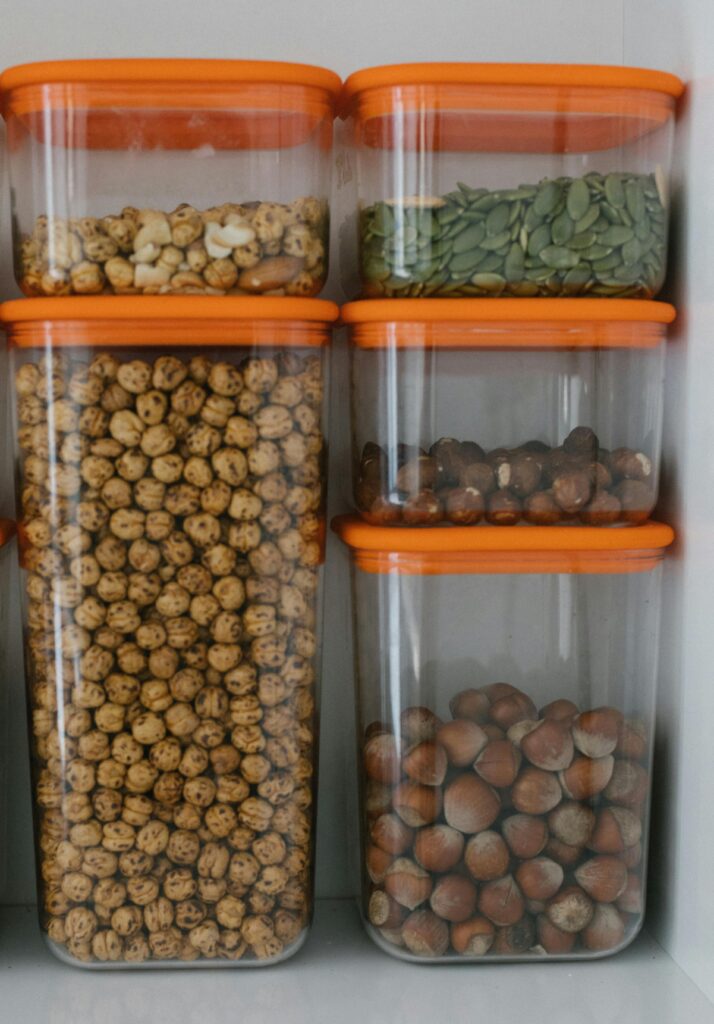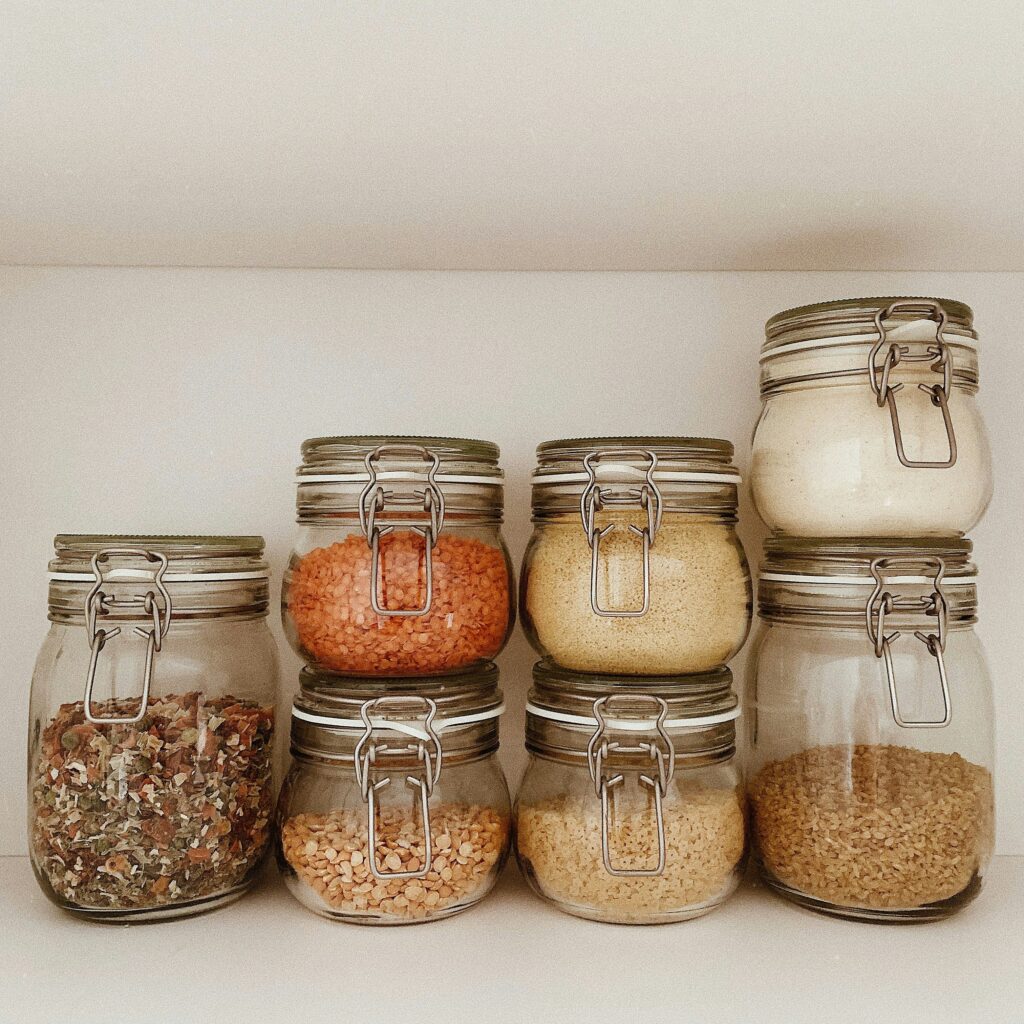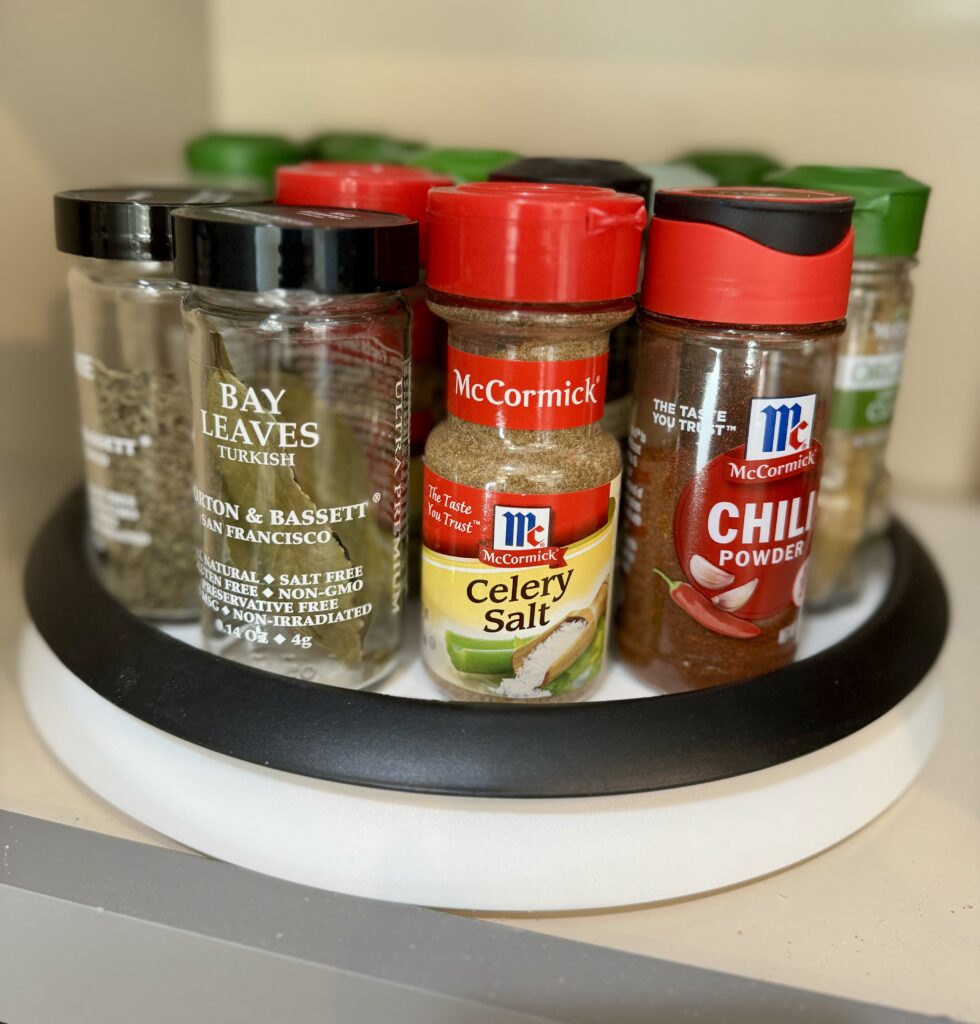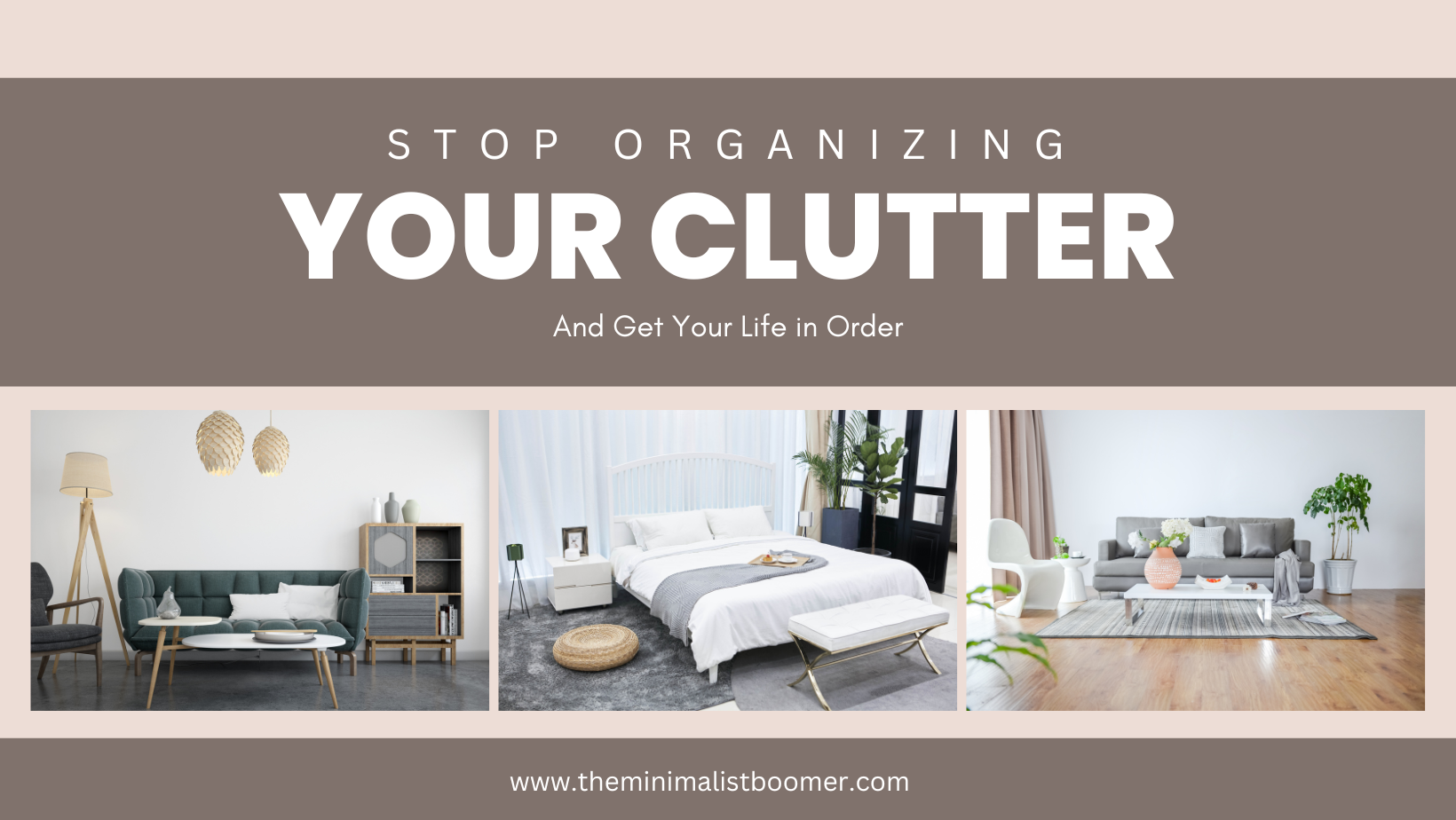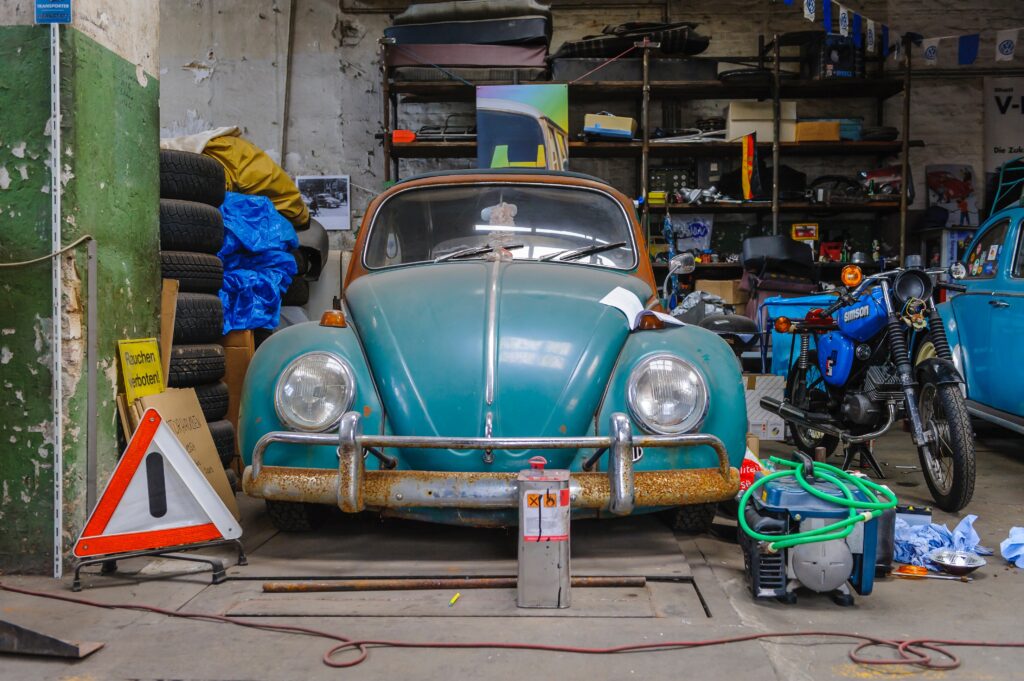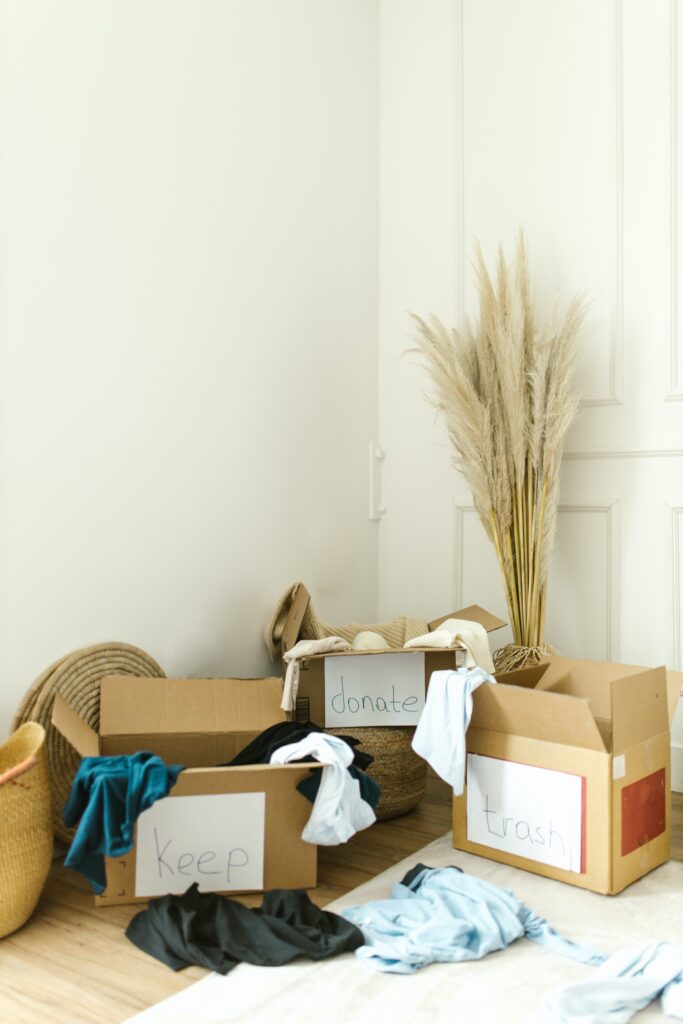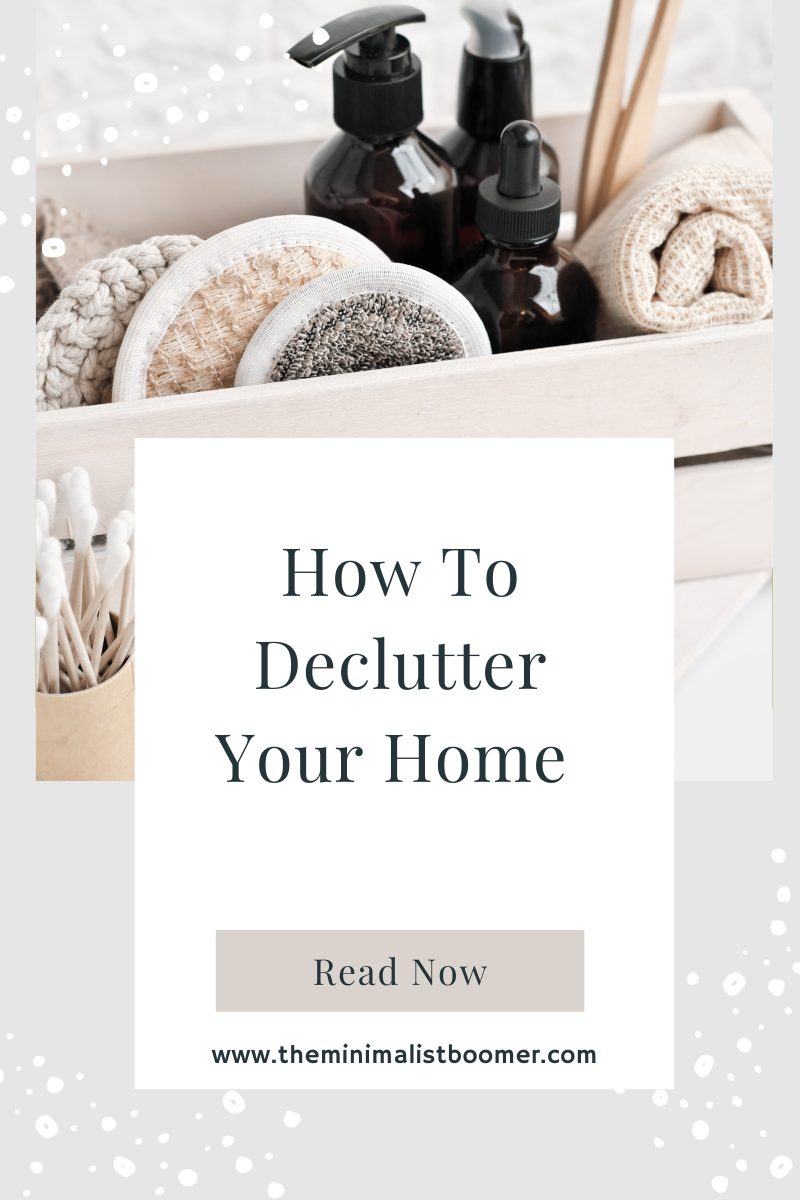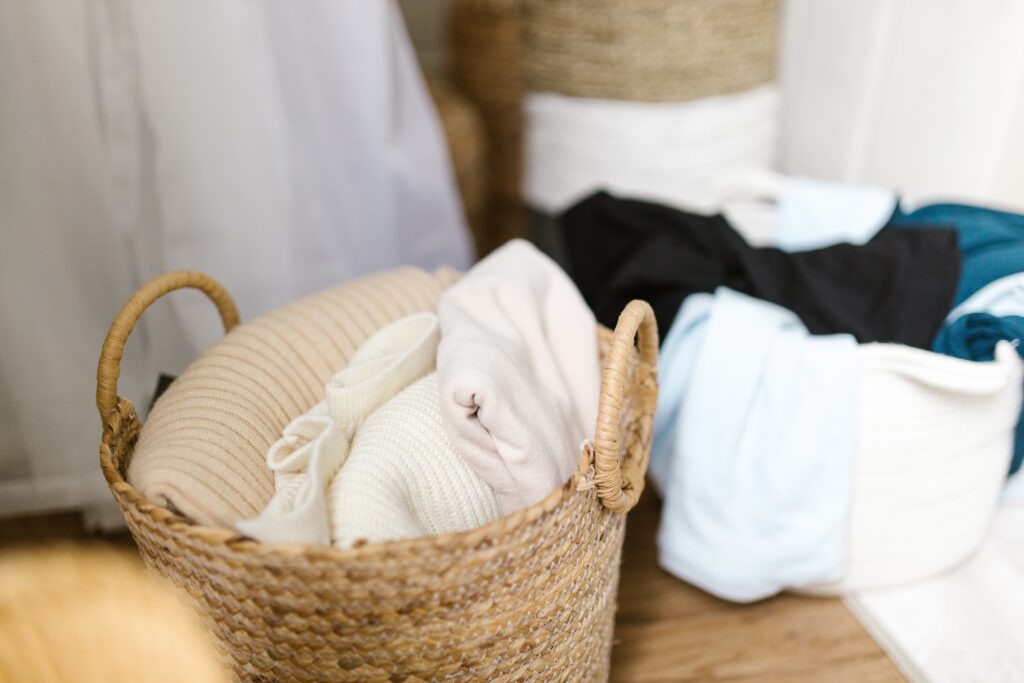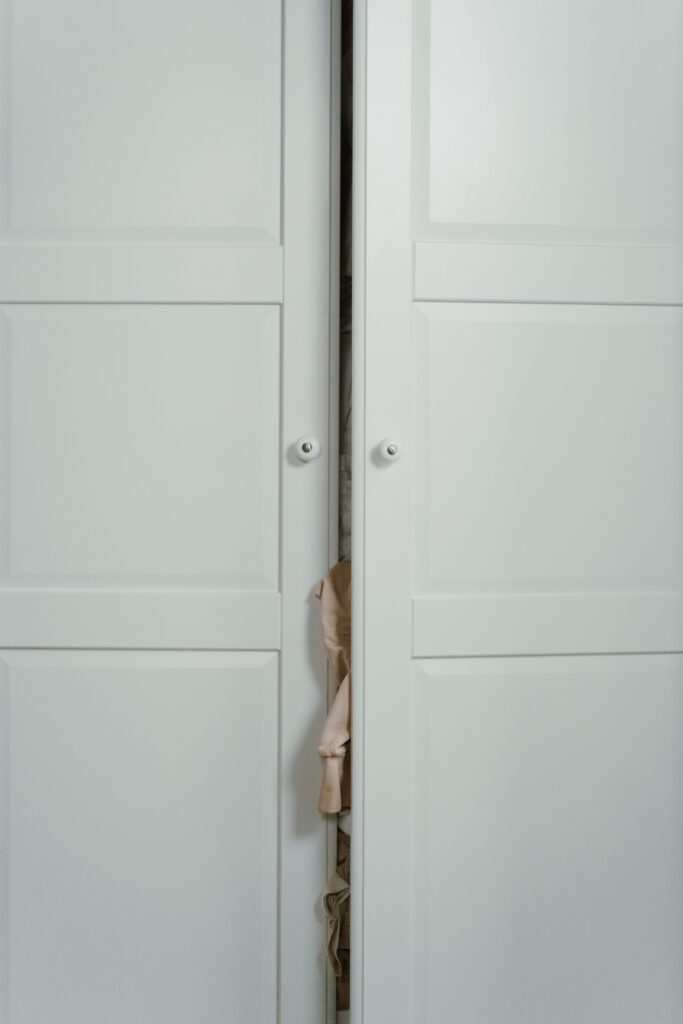Spring is more than just a change in weather — it’s a fresh start. For minimalists, it’s the perfect chance to reset, strip away the excess, and make space for what truly matters. But spring cleaning doesn’t have to feel overwhelming. When approached with simplicity and intention, it can transform from a dreaded chore into an opportunity to bring clarity into your home—and your mind. Ready to clear the clutter and breathe easier? Let’s get started.
Now is a Great Time to get Started
Spring cleaning isn’t just about scrubbing floors or wiping down windows—it’s a chance to clear out the clutter in order to create space, both physically and mentally. Adopting a minimalist mindset means focusing on what adds value to your life and letting go of what doesn’t. By simplifying the process, you’ll not only lighten your home but also your mind.
Start with Why
Before grabbing the mop or emptying your closet, ask yourself: Why do I want to spring clean? Is it to create a more relaxing space? Clear mental clutter? Align your home with your values? Understanding your motivation sets the tone for a purposeful process. Without it, it’s easy to get distracted or overwhelmed.
Minimalism complements spring cleaning because it’s not just about tidying up; it’s about aligning your space with the life you want to live. For example, if you value calmness, decluttering your living area can help you feel more grounded. If you cherish relationships, clearing out unused items might make room for shared experiences instead of “stuff.” When you connect your cleaning efforts to your why, the result feels far more rewarding.
Adopt Simple Rules
Decisions can feel crippling when you’re sorting through piles of clothes or miscellaneous junk drawers. That’s where a few straightforward rules can help. They act as guardrails, keeping the process simple and effective. Here are a couple of my favorites:
- The One-Year Rule: Haven’t used it, worn it, or even looked at it in the past year? Time to let it go. Be honest with yourself—if it’s sitting in a dusty corner now, will it really have a place in your future?
- One In, One Out Philosophy: For every new item you bring into your home, commit to removing one. This not only prevents future clutter but also makes you think twice before adding anything new.
These rules remove the mental tug-of-war and make decisions quick and easy. By sticking to them, you’ll avoid second-guessing what stays or goes.
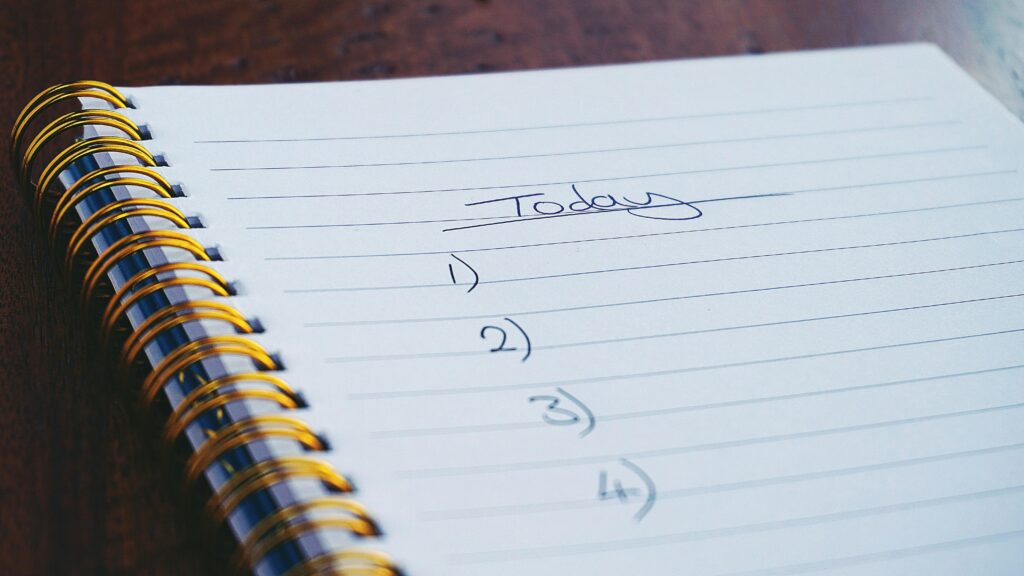
Set Realistic Goals
Taking on spring cleaning with a minimalist mindset doesn’t mean you have to tackle everything at once. In fact, trying to do it all in one day is a recipe for burnout. Instead, break your tasks into small, manageable steps. For example:
- Focus on one room at a time. Maybe start with the kitchen today and the bedroom tomorrow.
- Set a timer for 30 minutes and work on one specific area—like a closet or a single drawer.
Think of it like peeling an onion—layer by layer. Each small win builds momentum, and before you know it, those little chunks add up to big changes. By setting realistic goals, you’re less likely to feel overwhelmed and more likely to stay consistent.
Remember, spring cleaning isn’t a race. It’s a process. By slowing down and taking it step by step, you’ll not only ease your stress but also truly enjoy the results.
Preparing for a Successful Declutter
Spring cleaning without preparation is like trying to bake without gathering ingredients—you’ll end up feeling frustrated and scatterbrained. A little planning upfront can save you time, energy, and unnecessary stress. By getting your tools ready, organizing your approach, and enlisting help, you’ll transform this daunting task into a smooth and satisfying experience. Here’s how to lay the groundwork before you start.
Gather Essential Supplies
Before you tackle any space, make sure you have the right supplies on hand. Scrambling to find items halfway through the process interrupts your momentum and makes everything take longer. Keep it simple and stick with a few key tools that make decluttering easier:
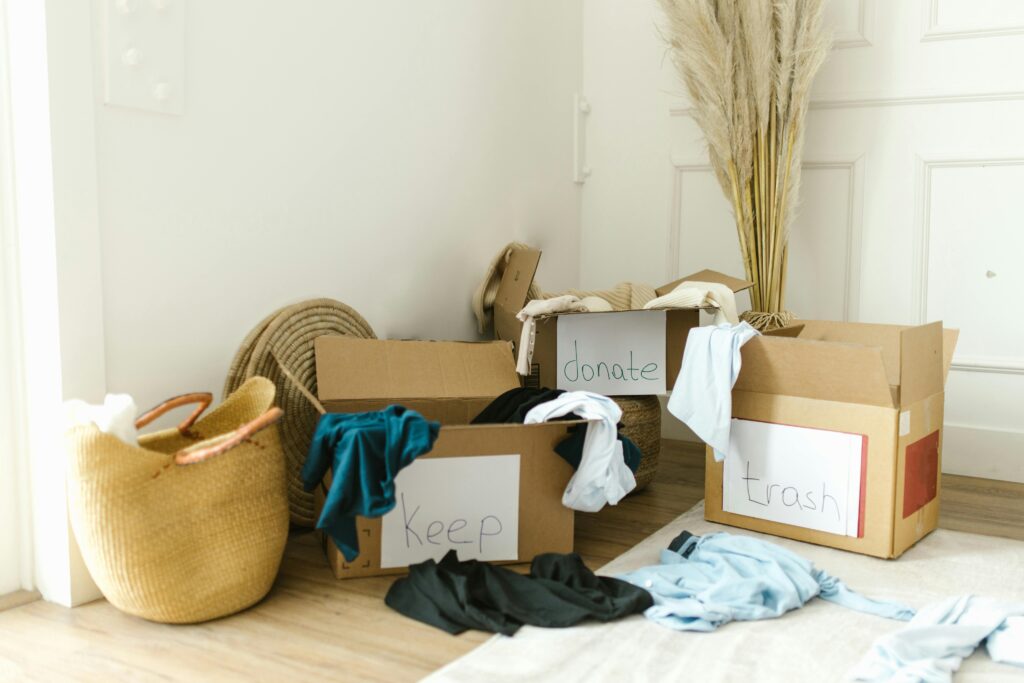
- Boxes: Use one for items to keep, one for donations, and one for things you’re unsure about (but aim to keep the “unsure” box small).
- Donation Bags: Opt for sturdy, reusable bags to hold items you’ll give away. This keeps them organized and ready for drop-off.
- Trash Bags: Heavy-duty bags work best for items that are beyond repair and need to be discarded.
- Cleaning Supplies: Choose eco-friendly products like reusable cloths, natural all-purpose sprays, and a vacuum or duster to tidy up as you go.
- Labels or Markers: Use these to clearly mark boxes and bags so you don’t confuse what’s staying, going, or being donated.
Having everything within reach keeps you focused and promotes efficiency. Think of it as building your decluttering toolkit—it’s much easier to fix a problem when the right tools are at hand.
Create a Plan of Action
Instead of jumping in without direction, take a moment to map out a plan. Decluttering an entire home can feel like climbing a mountain. But with a clear route and smaller targets, that mountain becomes more manageable foothills.
- Prioritize Spaces: Start with areas that bother you the most or have the highest impact. For example, the kitchen counter or entryway might create daily stress. Tackling those first builds momentum and delivers instant gratification.
- Set Deadlines: Give yourself realistic but firm deadlines. Maybe Saturday morning is for the closet, Sunday for the pantry. Deadlines create accountability and prevent procrastination.
- Stick to the Plan: Write your plan down somewhere visible or set reminders on your phone. It’s easier to stay on track when you remind yourself why this matters.
Treat it like a game plan for a team sport. Each step moves you closer to your goal, and sticking to it ensures nothing slips through the cracks.
Involve the Household
If you live with family or roommates, their participation—or lack thereof—can make or break your declutter. The last thing you want is to pour your energy into tidying up, only for others to undo your hard work. But getting everyone on board doesn’t have to feel like pulling teeth.
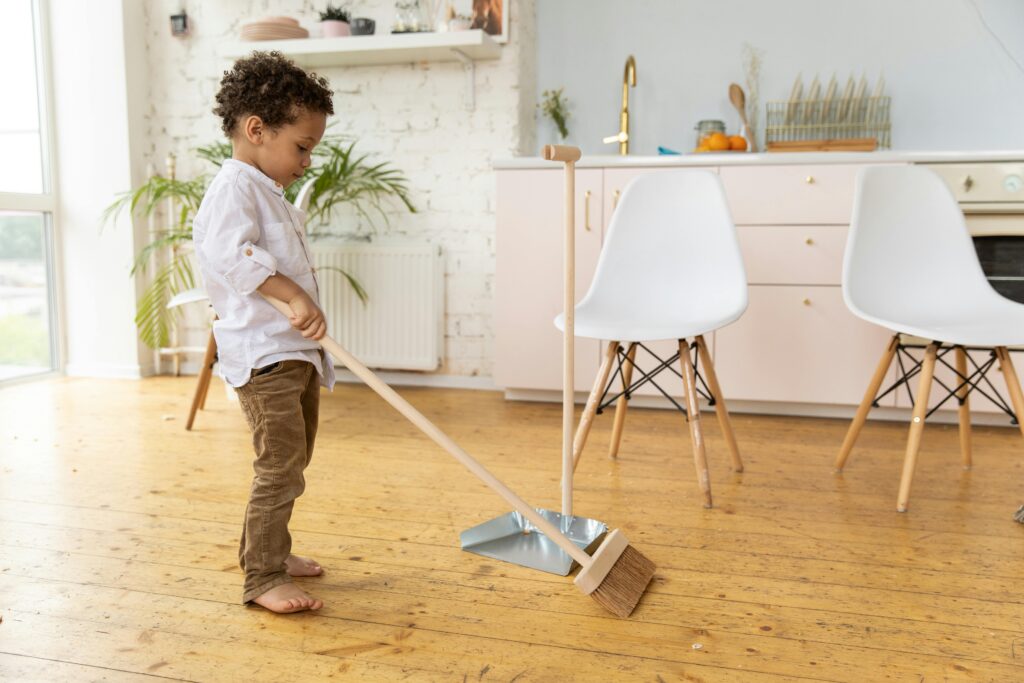
- Start with a Conversation: Explain why this effort is important to you and how it benefits everyone. A clutter-free home can mean less stress, fewer lost items, or more space to live comfortably. When people understand the “why,” they’re often more willing to join in.
- Delegate Tasks: Assign specific areas or items to each person. For example, kids can sort through toys, while your roommate handles their closet. Breaking it down keeps things fair and manageable.
- Make It Fun: Turn on some music, set a timer, and create a little competition in your collaboration. Who can fill a donation bag the fastest? Or who can sort their items the most efficiently? Small incentives like a family pizza night afterward can also keep everyone motivated.
Remember—it’s a team effort, not a battle. By involving everyone in a positive way, you’ll create a sense of shared responsibility and pride in the results. And who knows? They may even thank you (eventually).
Room-by-Room Cleaning Made Simple
Spring cleaning can feel like a giant hurdle if you try to tackle everything at once. Breaking it down room by room makes the process more manageable and less stressful. Each space in your home serves a unique purpose, so approaching them individually helps you focus on what matters most in each area. Let’s walk through how to declutter and refresh every corner of your home, the minimalist way.
Living Room: Less is More
The living room is often where we spend most of our time, but it can easily become a dumping ground for miscellaneous items. Start by clearing surfaces like coffee tables, TV stands, and shelves. Do you really need all those knick-knacks and magazines? A cleaner space allows your décor to shine and provides a sense of calm.
Take a moment to evaluate your furniture and decorative items. Ask yourself: Is this something I really enjoy, or is it just taking up space? Consider reducing the number of throw pillows, blankets, and wall hangings. By simplifying your surroundings, you’ll make the room feel lighter and more inviting.
Pro tip: Invest in storage solutions like woven baskets or multifunctional furniture to tuck away remotes, books, or games while maintaining a clutter-free look.
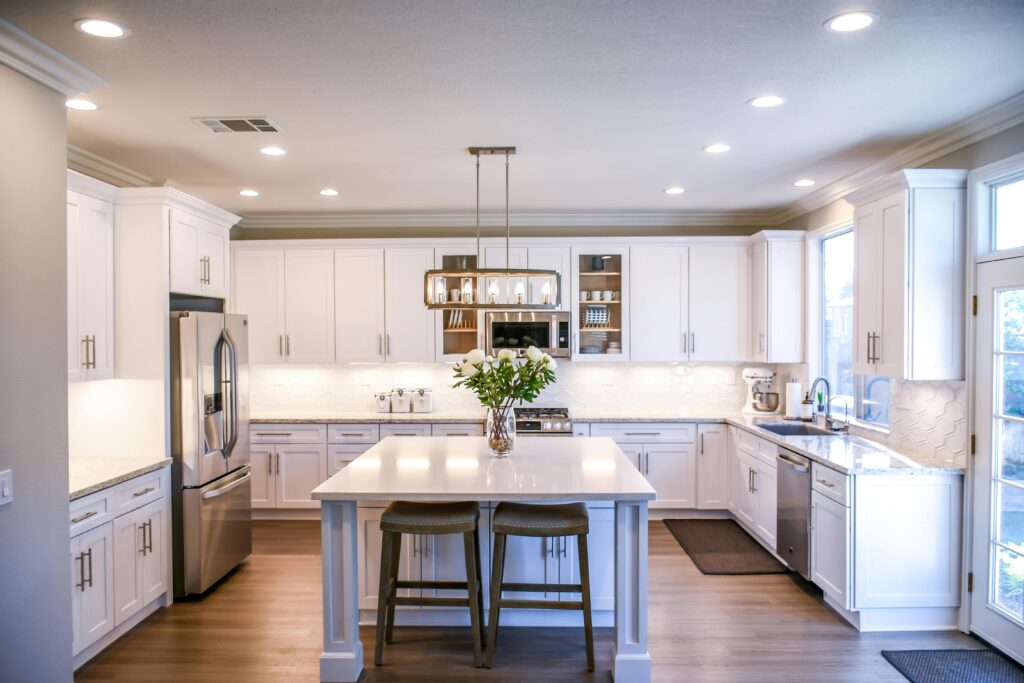
Kitchen: Purge and Organize
The kitchen is the heart of the home, but it’s also where clutter accumulates in the form of expired spices, unused gadgets, and overly packed cabinets. Start by opening every cabinet and drawer. Check expiration dates on food items and toss anything past its prime. This isn’t just about clearing space, it’s also a small step toward better food safety.
Once you’ve purged the outdated and unused items, think about storage. Clear storage containers for pantry staples like rice, pasta, and snacks can eliminate bulky packaging and make everything look more uniform. It also allows you to see how much you have on hand at any given time. Use drawer dividers for utensils and consider hanging hooks inside cabinet doors for items like measuring cups or dish towels.
Finally, don’t forget high-use areas! Clear and wipe down countertops, clean cabinet surfaces, and shine your sink. These quick touches create an instant feeling of freshness in one of the busiest rooms in your home.
Bedroom: A Peaceful Retreat
Your bedroom should be your sanctuary, a place for rest, not random clutter. Start with your closet. Pull out everything you haven’t worn in the past year and ask: Would I buy this again today? If the answer is no, donate it. The same goes for shoes and accessories.
Next, minimize bedside items. Keep only essentials like a lamp, book, and perhaps a glass of water or a small plant. The fewer distractions near your bed, the easier it is to unwind and fall asleep.
Think about textures and colors as well. Soft, neutral tones in bedding and window coverings can create a soothing atmosphere. When your bedroom is free of excess, it feels less like a storage space and more like a retreat.
Bathroom: Functional Minimalism
Bathrooms might be small, but they’re high-traffic areas that deserve special attention. Start by clearing out medicine cabinets, drawers, and under-sink storage. Toss expired medications, makeup, and skincare products. If you haven’t used it in months, it’s probably time to let it go.
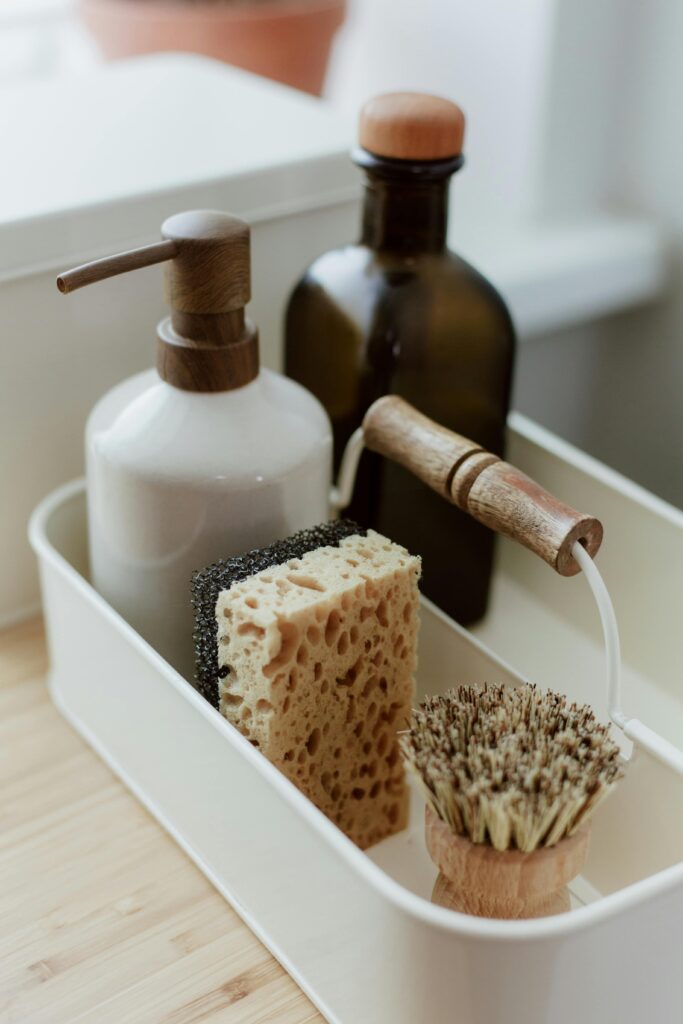
Next, organize. Use small bins or trays to group similar items—like dental care in one, skincare in another. Clear counters by storing away anything not used daily. The goal here is functional minimalism: keeping only what you need, neatly arranged for easy access.
Don’t forget to give your bathrooms a good cleaning once you’re finished decluttering.
Garage or Storage Spaces: Tackling Hidden Clutter
Garages or storage areas are often dumping zones for things we don’t know what to do with. But remember, out of sight shouldn’t mean out of mind. Start by pulling everything out. Yes, everything. This will give you a clear view of what you’re dealing with.
Sort items into three piles:
- Keep: Only items you use regularly or genuinely need.
- Donate: Things in good condition that no longer serve you.
- Toss: Broken or unusable items.
Once sorted, tackle organizing. Use labeled bins or shelves to make frequently used items, like tools or seasonal decorations, easy to access. Pegboards are great for hanging tools, and larger hooks work wonderfully for bikes or ladders.
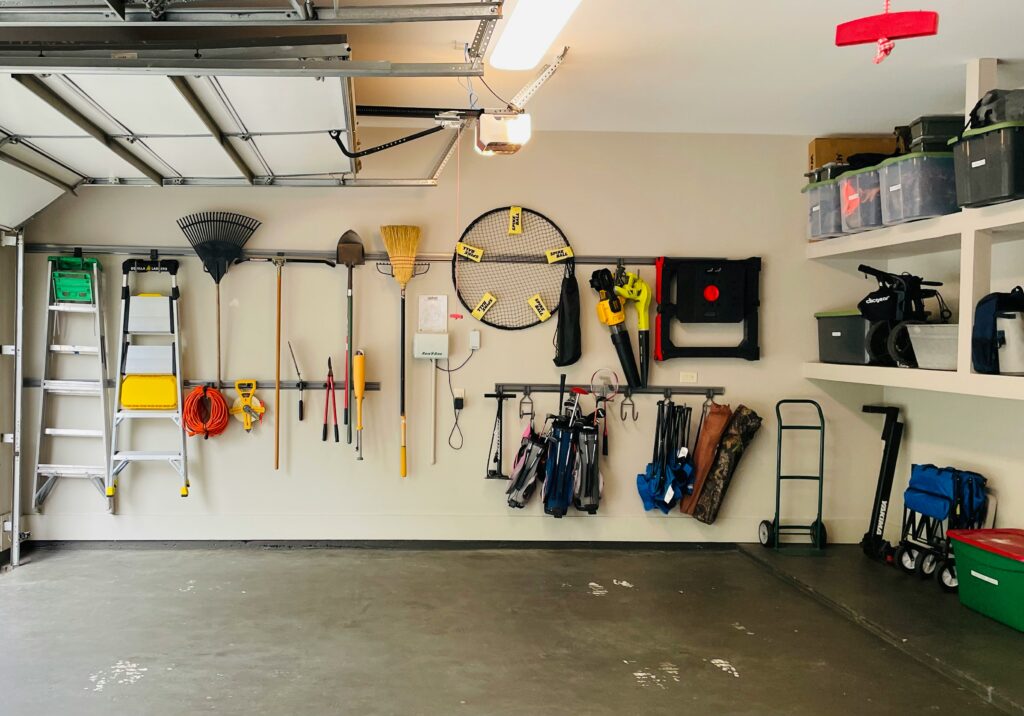
Clearing out your storage space does more than free up physical room—it relieves the mental weight of hidden chaos.
By breaking the process down into manageable chunks, each step feels less overwhelming and more rewarding. Transform your home space by space, and you’ll soon feel the difference in both your environment and your mindset.
Maintaining Minimalist Habits Year-Round
It’s one thing to achieve a crisp, clutter-free home during spring cleaning, but how do you make it last? Minimalism isn’t just something you do once—it’s a way of life. By adopting a few simple habits, you can maintain the effort you’ve put in and keep your space feeling light and clutter-free throughout the year. These tips can help you maintain habits that stick, ensuring that your home remains a reflection of what matters to you most.
Adopt a ‘One-Minute Rule’
Clutter has a sneaky way of piling up when small tasks get ignored. The solution? The one-minute rule. If a task takes less than 60 seconds, do it right away instead of letting it linger.
For example:

- Put away your shoes as soon as you walk through the door.
- Wash a single cup instead of leaving it in the sink.
- Sort the mail as it arrives—recycle what you don’t need and file important documents.
Think of clutter like weeds in a garden. A small weed is easy to pull but ignore it and soon the garden is overrun. The one-minute rule prevents minor messes from snowballing into overwhelming chaos. It’s one of the simplest habits to build, yet it makes a noticeable difference in keeping your space clean and calm.
Schedule Regular Decluttering Check-Ins
Minimalism isn’t just about the big cleanouts; it’s about consistent maintenance. To avoid letting clutter creep back in, set a schedule for regular check-ins. Think of it like giving your home a tune-up every few months.
Here’s a quarterly schedule to keep things under control:
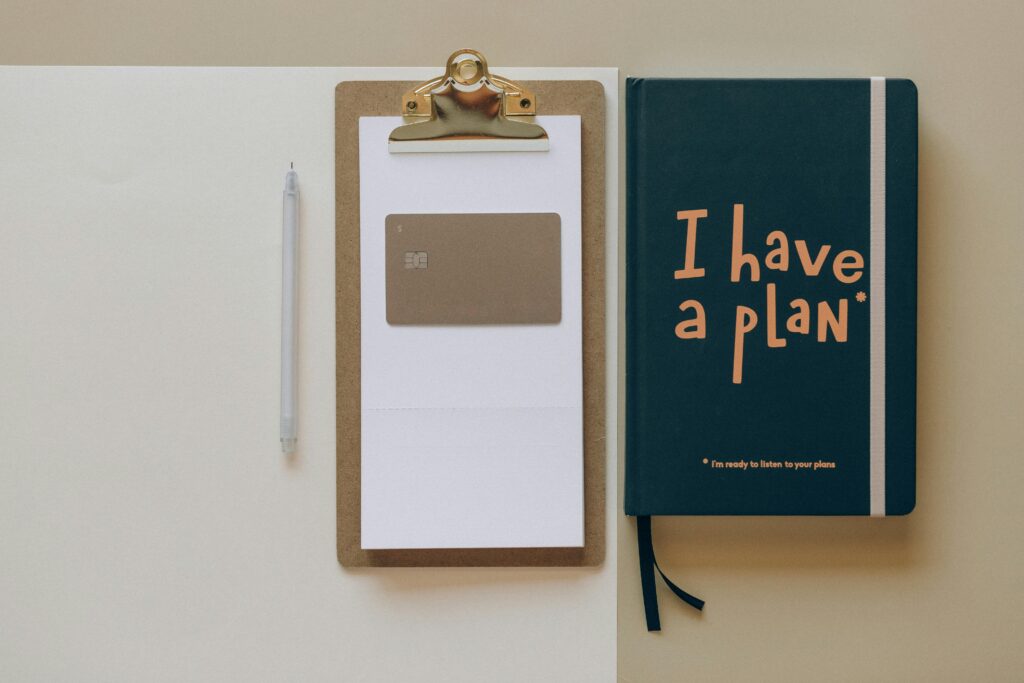
- Spring: Deep clean and tidy up after winter hibernation. Focus on clothing, holiday decor, and sentimental items.
- Summer: Assess outdoor gear like gardening tools, beach supplies, and camping equipment. Let go of items that didn’t see use this season.
- Fall: Clear out crowded closets and prepare for cooler weather. Say goodbye to summer clothes you didn’t wear.
- Winter: Tackle storage areas like basements, attics, or garages. Discard anything broken or forgotten before the new year.
By spreading the work over the year, decluttering feels manageable instead of overwhelming. You’ll also reinforce your minimalist habits, making it easier to stay on top of things without backsliding.
Be Intentional with New Purchases
It’s easy to undo all your hard work with a few impulsive purchases. That sale item you “couldn’t pass up”? It just turned into tomorrow’s clutter. Instead, practice being intentional every time you buy something new.
Ask yourself these questions before you hit the checkout button:
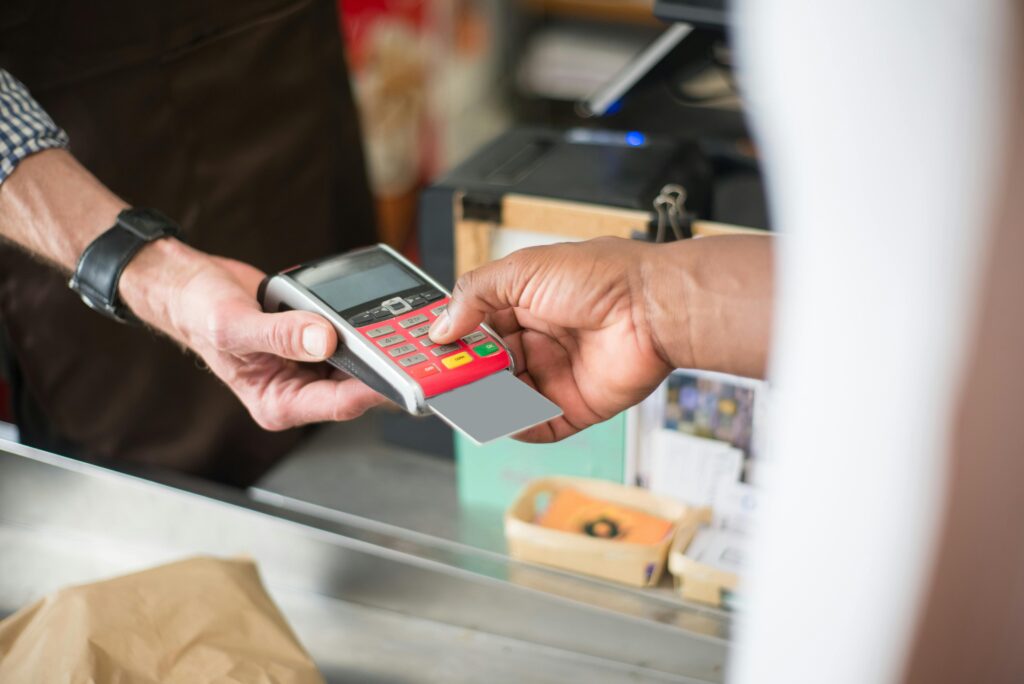
- Do I really need this, or am I just filling a fleeting desire?
- Does this item solve a problem or bring lasting value to my life?
- Do I already own something that can serve the same purpose?
To slow down impulse buys, use the 30-day rule: wait a month before purchasing non-essential items. Many times, the urge will pass, leaving you glad you didn’t buy something unnecessary.
When you do decide to bring something home, follow the minimalist principle of quality over quantity. A thoughtfully chosen item often outlasts cheap alternatives, reducing waste and clutter in the long run. Being selective isn’t restrictive, it’s freeing. Every item you choose to own should enhance your space, not overwhelm it.
Maintaining minimalist habits doesn’t have to feel rigid or limiting. These simple practices allow you to sustain that refreshed, clutter-free feeling all year long.
Minimalist spring cleaning is more than just tidying up—it’s a way to reset your space and your mind. By simplifying your surroundings, you create room for what truly matters, whether that’s peace, purpose, or simply breathing a little easier.
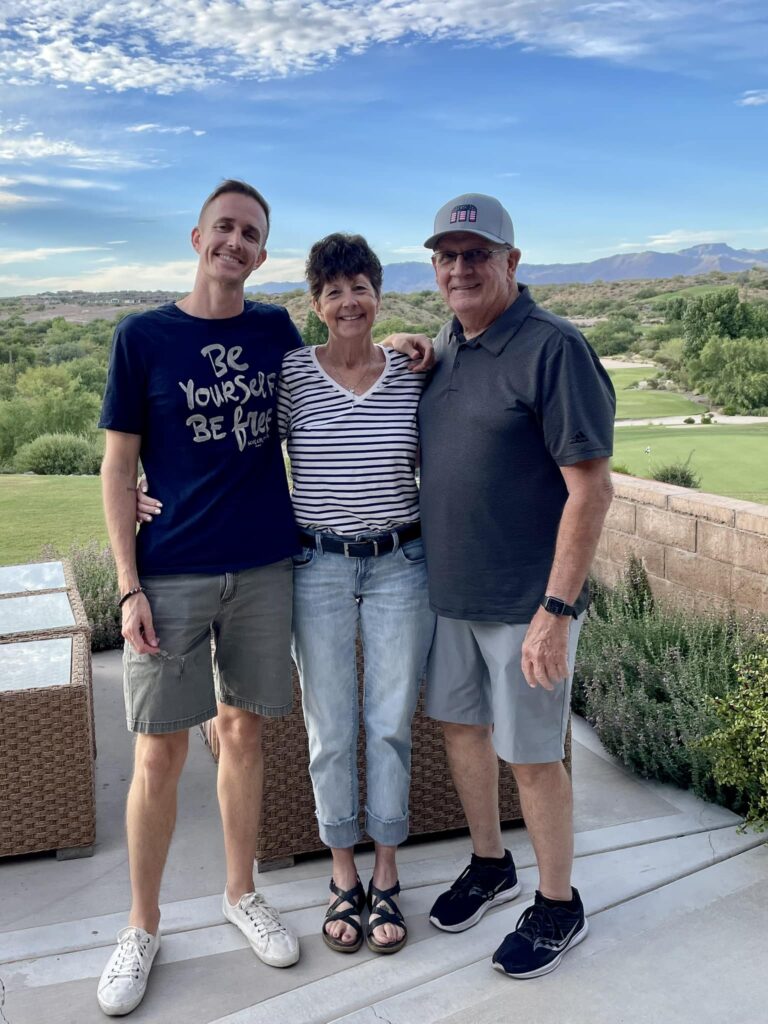
This is your chance to let go of what no longer serves you and welcome a lighter, calmer home. Start small, stay intentional, and remind yourself that every step forward brings clarity and balance.
What will you make space for this spring? The answer is yours to uncover.
Now grab those donation bags, set the timer, and start anew.
You’ve got this.

